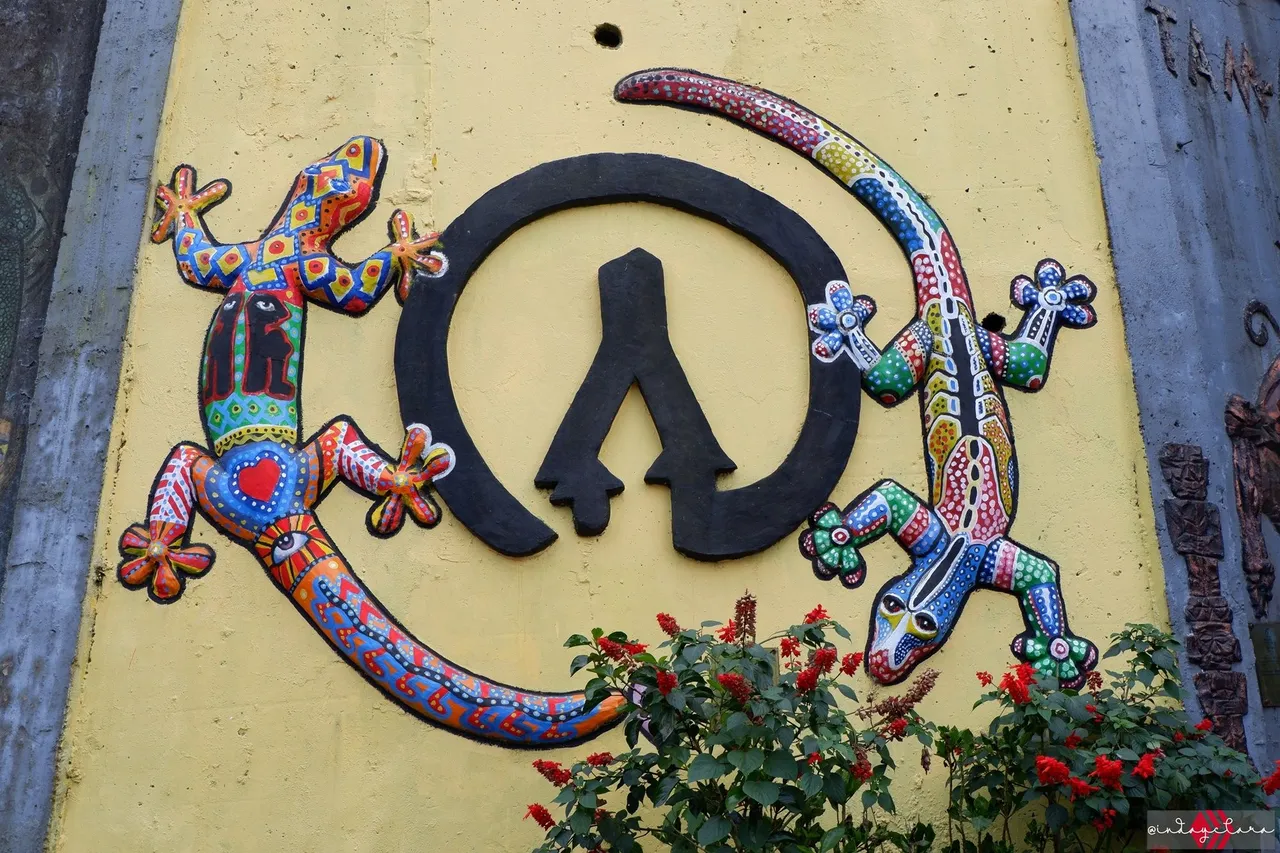
One of the highlights during my Baguio escapade was visiting TAM-AWAN VILLAGE. A beautiful cultural space or "museum" that embodies the life of the Cordillera tribes through the authentic native dwellings and village setup. Not just that, it is a sanctuary for Philippine artists where they can showcase their artworks. And If you are someone who enjoys cultural shows, you might just be in for a treat! They offer traditional tribal dances complete with costumes and musical instruments. It was all about the cultural experience that captivated my heart here.
Tam-awan Village is situated on the outskirts of Baguio, just 4 km from Burnham Park. Although it is favorable to get there through private vehicles, public transport like jeepney is available for those who want to go there. It is located just along the road so it's hard to miss it. As for me and my "ex", we reached the place using our rented motorbike after lunch.
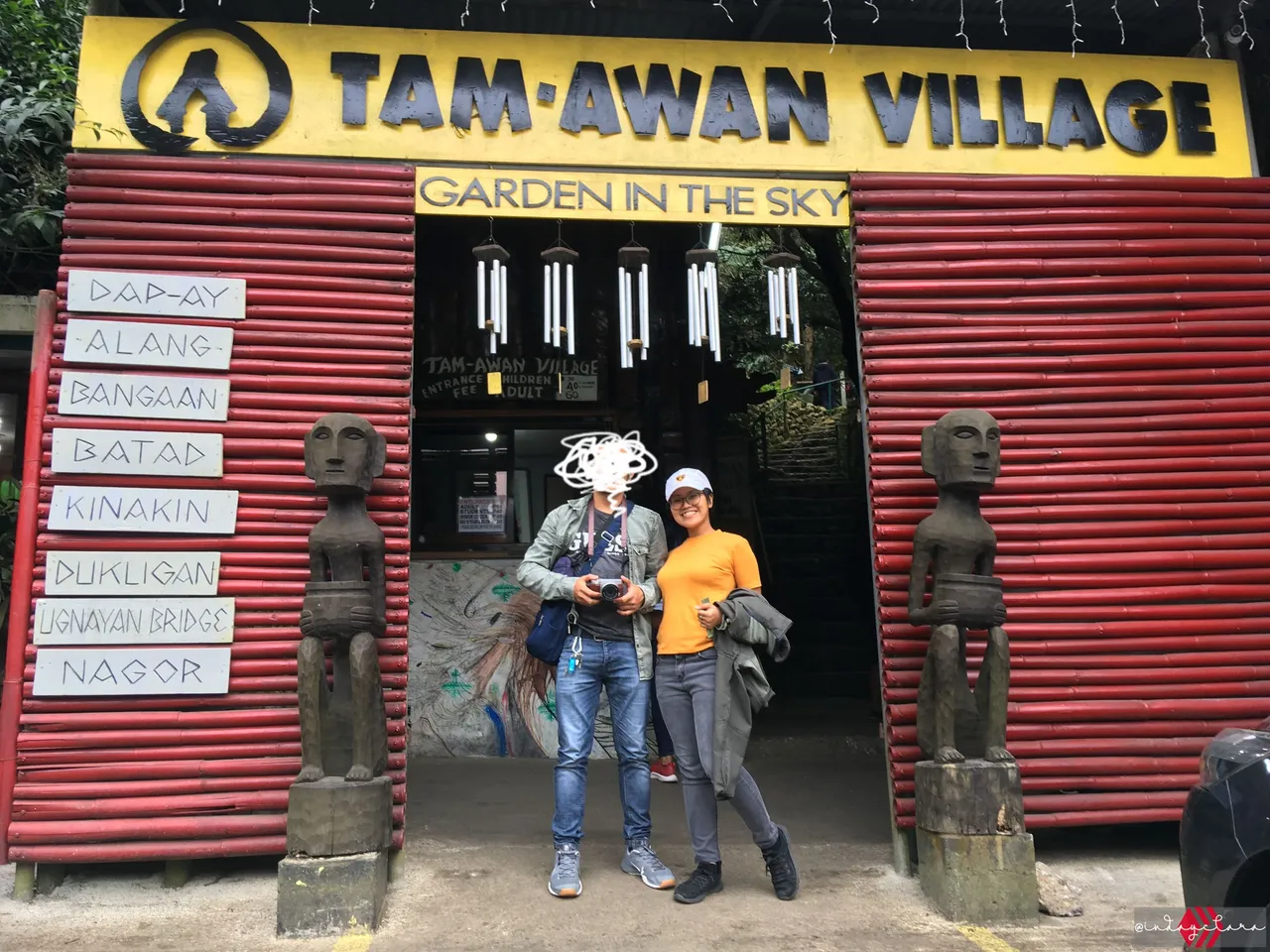
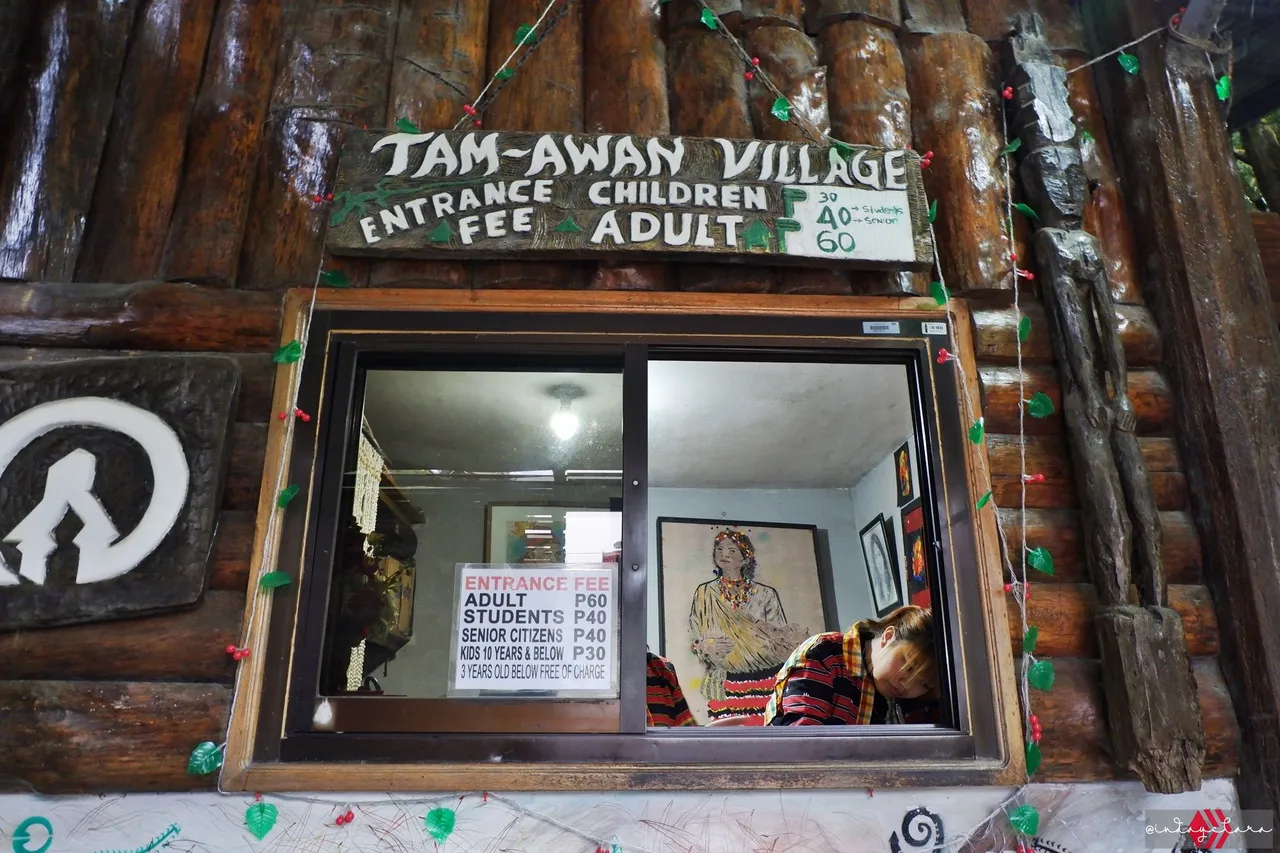
Two wooden "bul-ul" figures guards the village entrance. The reception area is located after it where we paid our entrance fee of Php 60.00. The lady behind the counter was even in a tribal custom and I was already impressed. Make sure to ask for a map so that it would be easy for you to navigate the trails. This we forgot to do!
Then we walked into a walkway filled with lush foliage. Since the village was set in a mountainous area, do expect that a bit of hiking is required. The ALANG was just right after the reception so it was the first spot we went to. ALANG is translated to "The Bontoc Rice Granary". This is where the Cordillera people store their collected rice. But what makes this a unique hut was because of the bul-ul (rice god) figures that they place inside so to guard their harvest. This Alang was built in 1950 and was acquired in 2006.
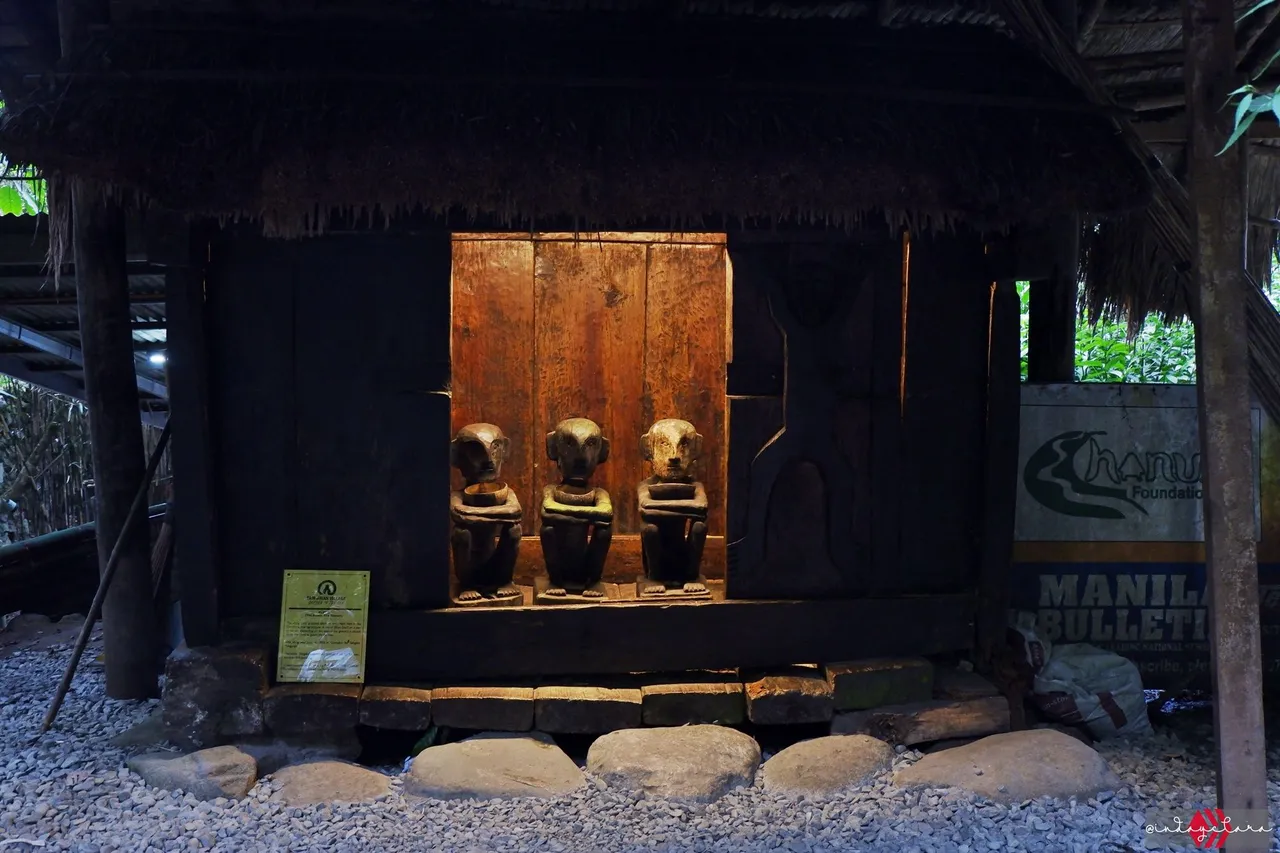
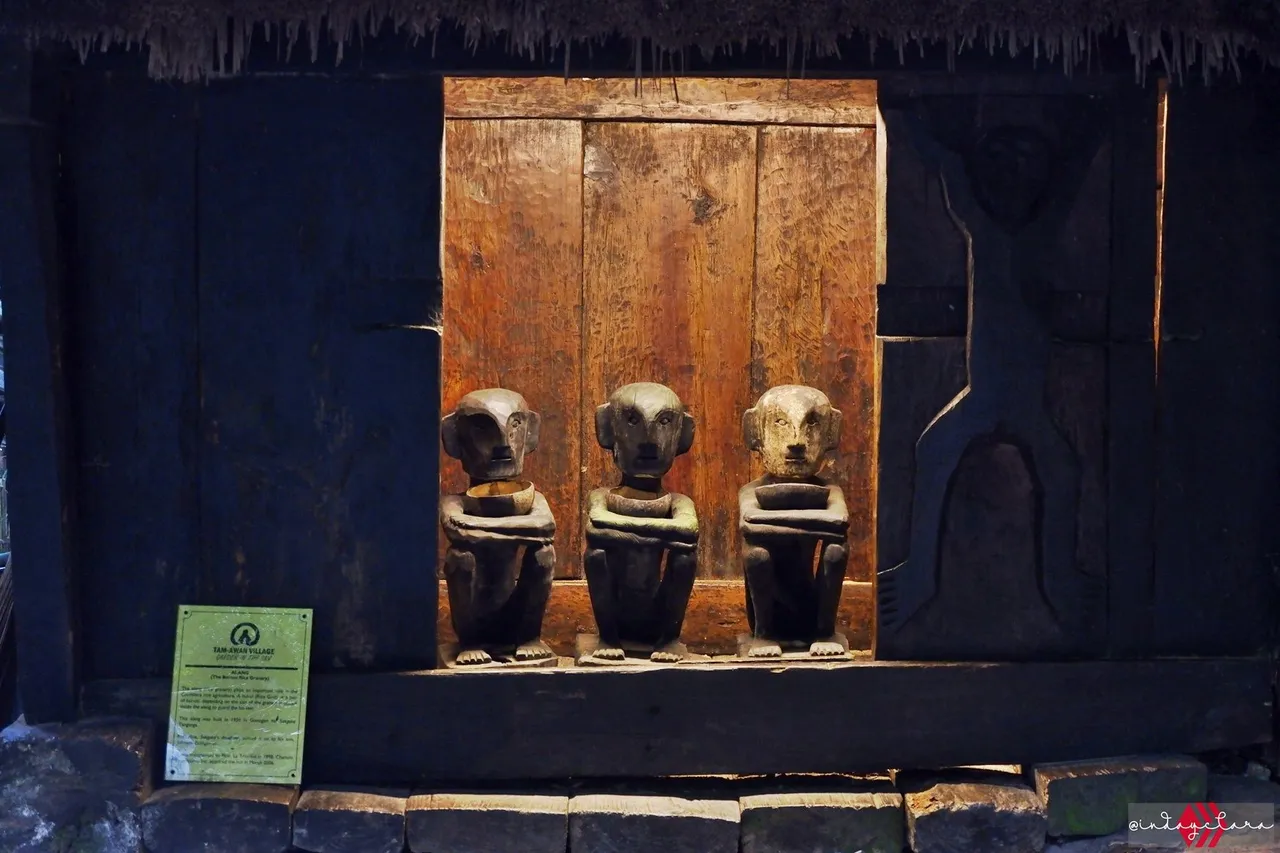
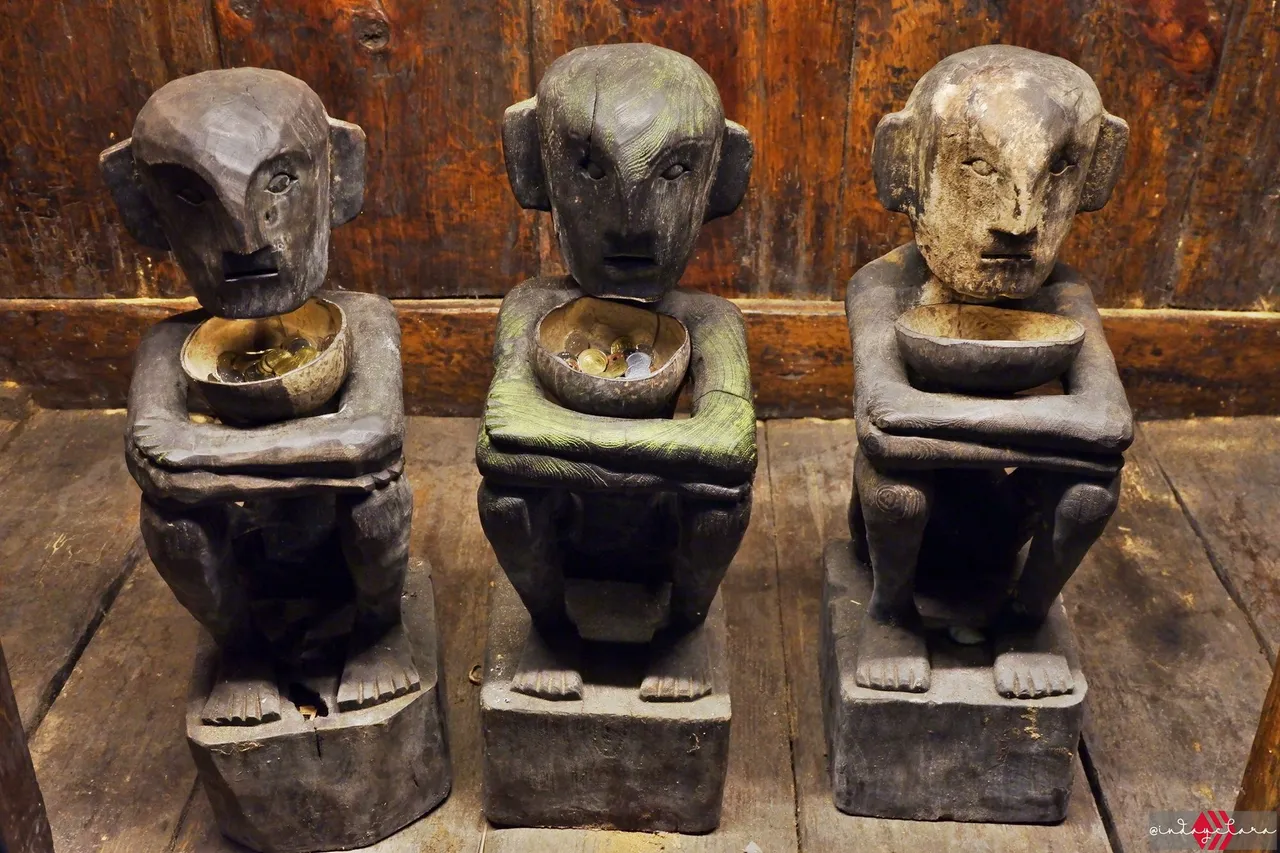
Just right behind the Alang is a fish pond with a few koi fishes. Then passing by the bridge, an intersection greeted us. We chose the path leading to the right where we saw the first traditional dwellings of the Kalinga tribe among several others found here in Tam-awan Village.
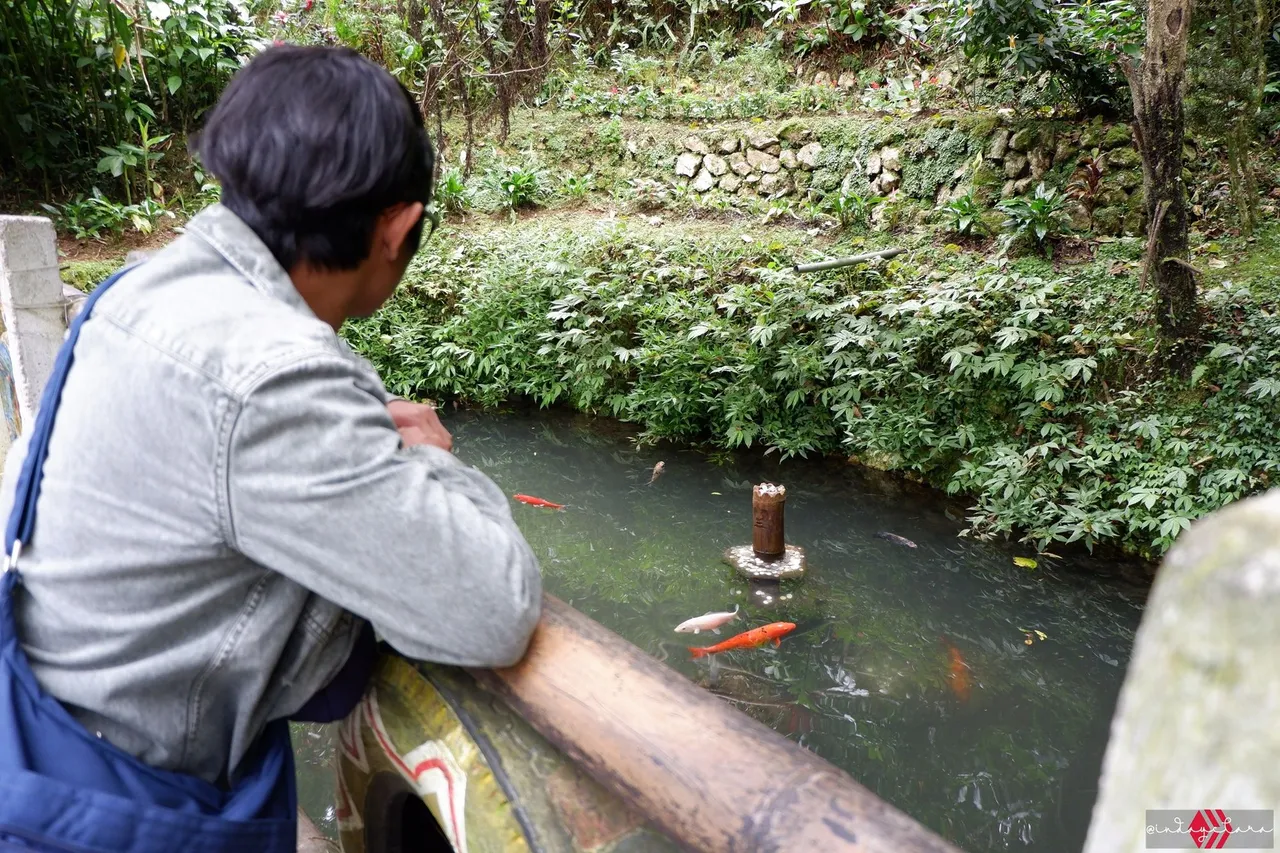
The Luccong is an Upper-Class Kalinga hut sold by a native from Luccong, Butbut, Kalinga. More than 80 years old (or probably more), it is one of the 3 surviving Binayon (octagonal) houses from the Cordillera region. In the past, what makes the rich Kalingas distinct from the rest is having a Binayon house. The Luccong is characterized by a timber structure, heavy cogon roof, and dark interiors.

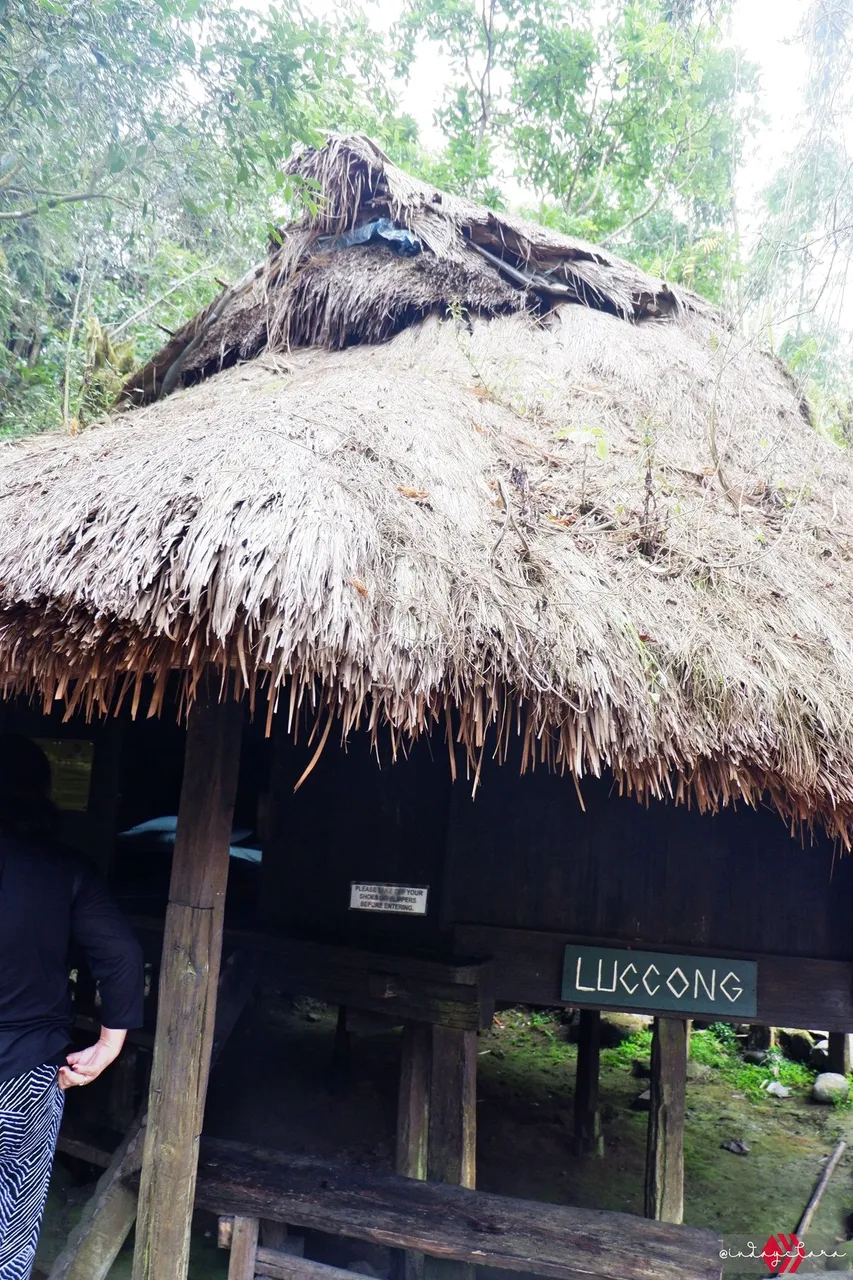
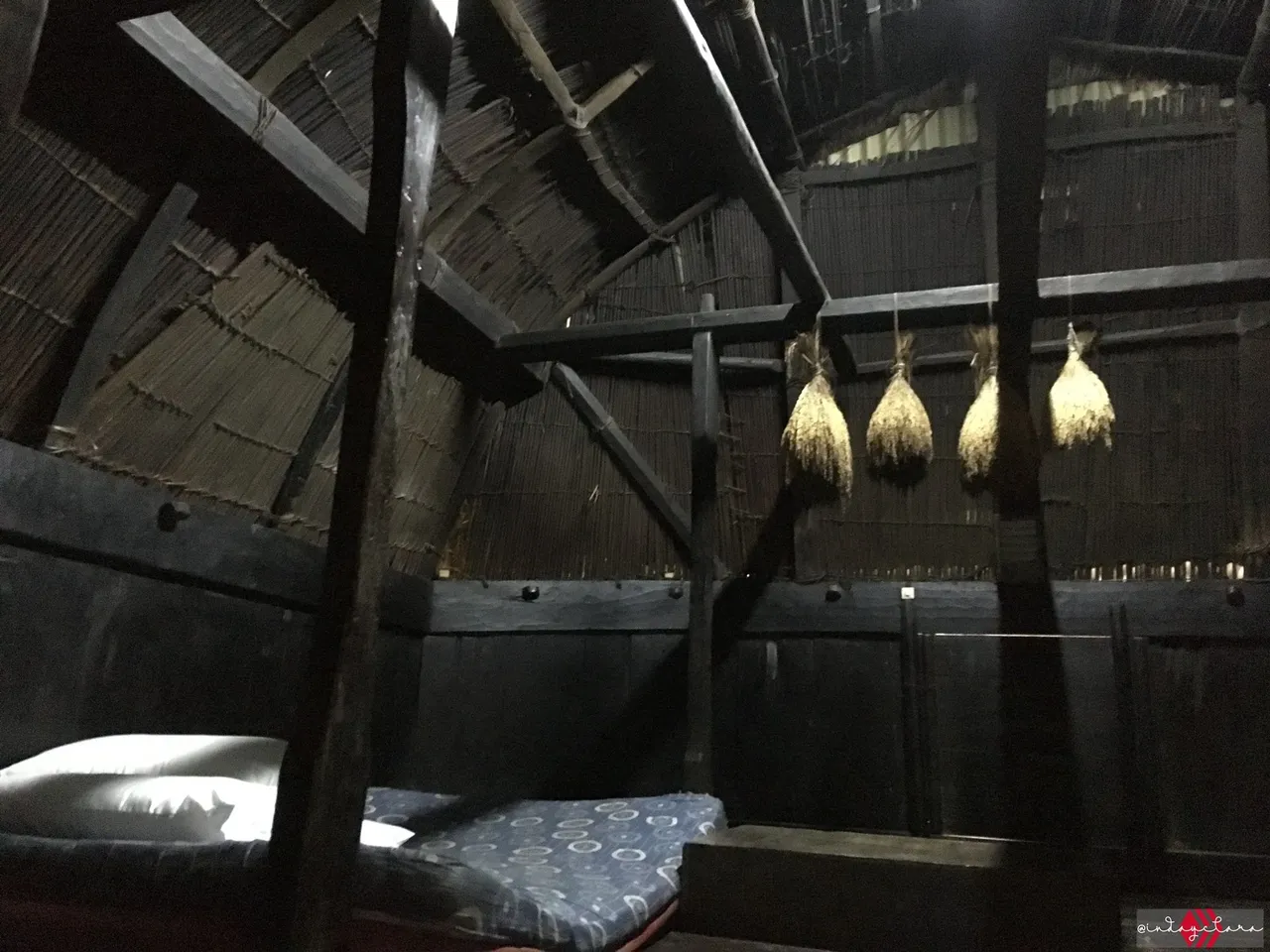
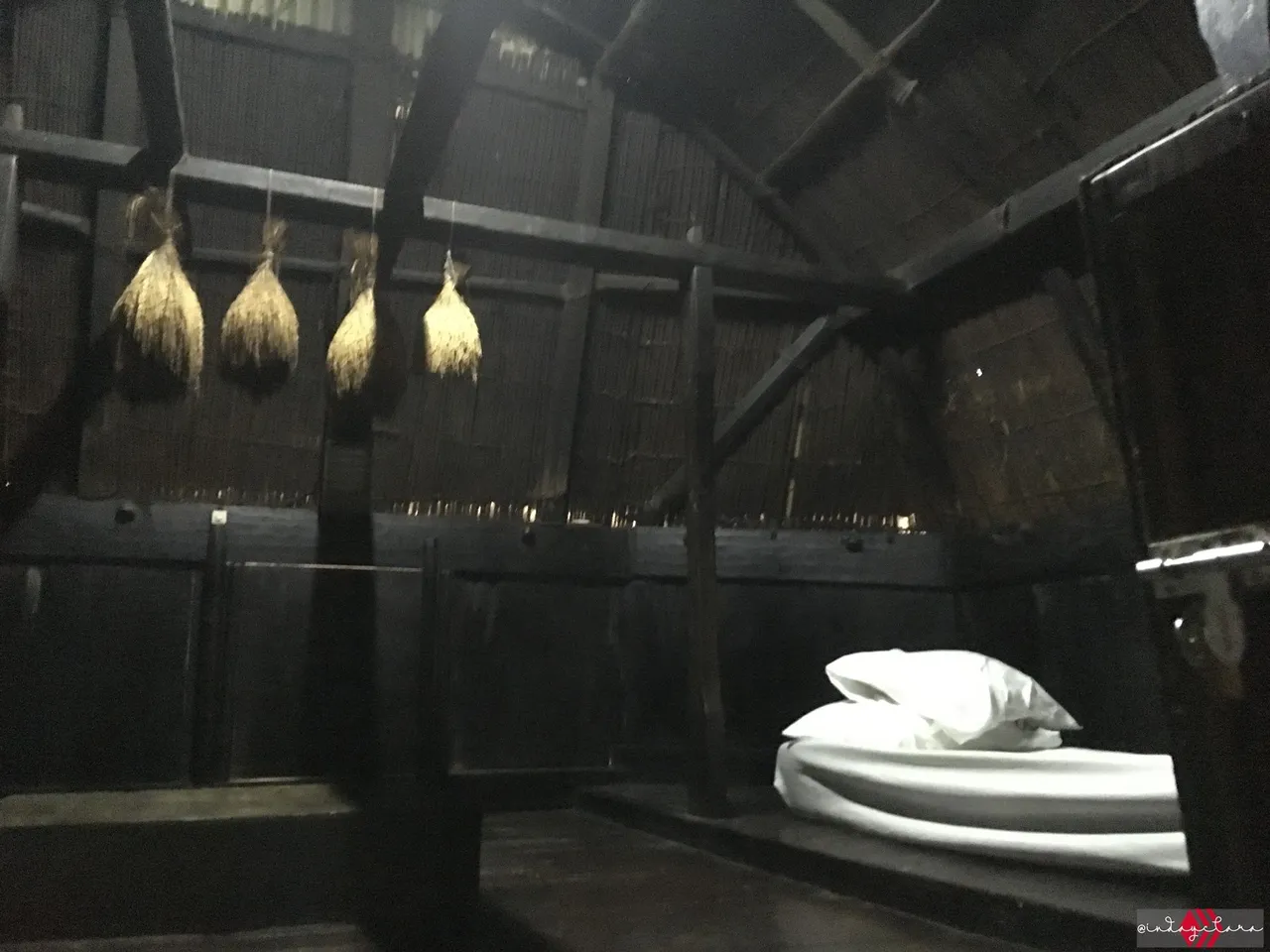
Just across the Luccong are the Cultural Area Show, Galleries, Craft Shop, and Cafe. Some local young adults were in traditional Kalinga clothing and were getting ready for a performance. Lucky us!
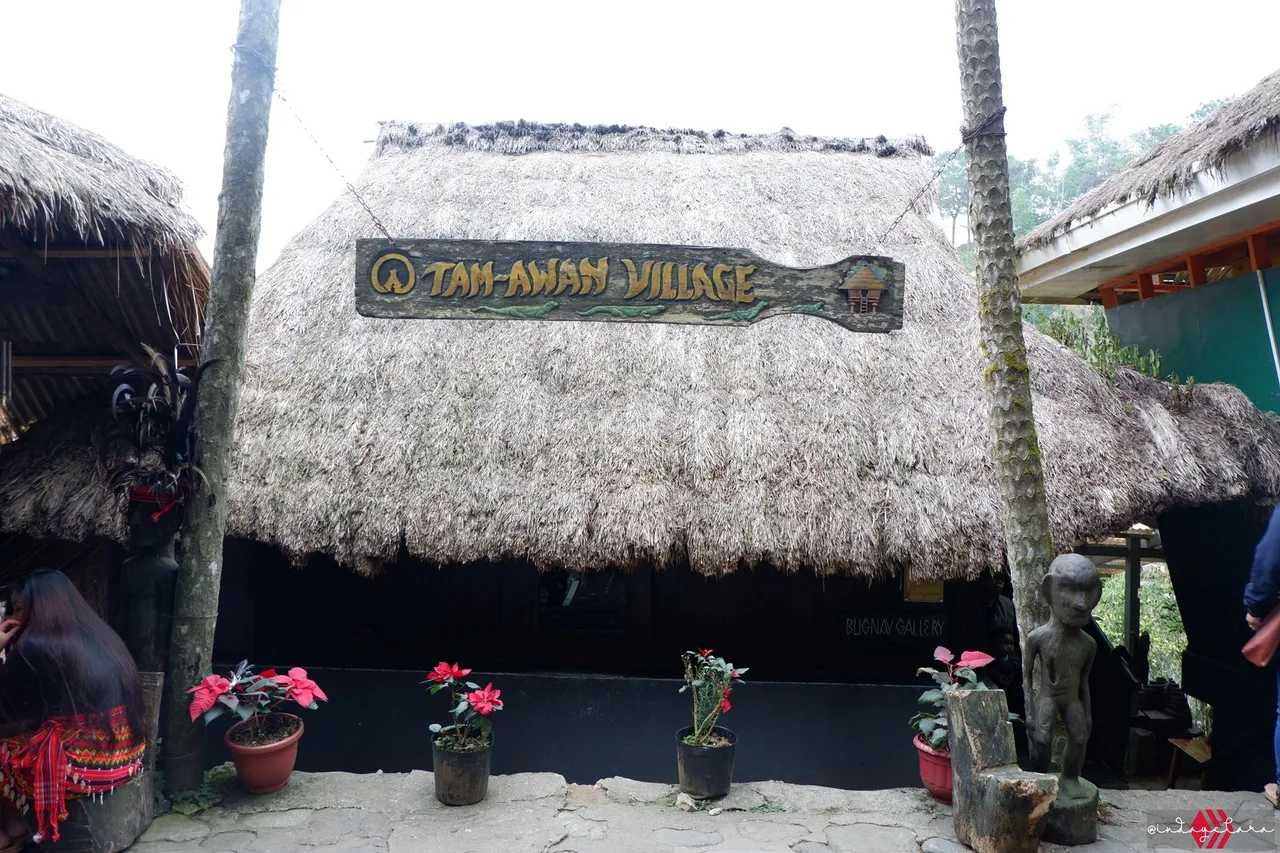
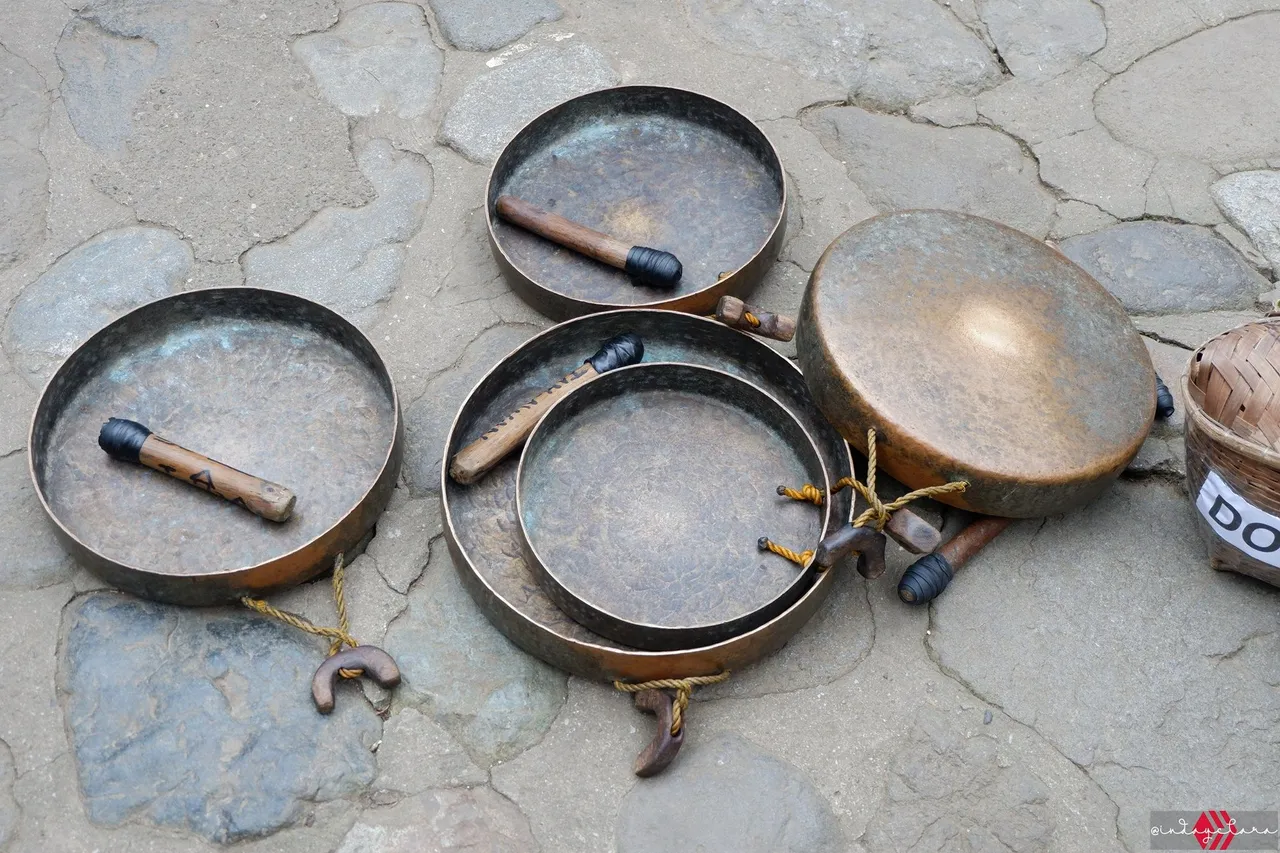
Just beside the performing area, an open room with bright colors caught our attention. Huge colorful paintings hung around its walls and we knew we just needed to see the rest of it. So while waiting to witness the dance, we went inside the UGNAYAN GALLERY. Several paintings depict native Kalinga and Ifugao people, traditions and customs, and other modern ones. All these are artworks of locals and are on sale. The one that I liked was the oil canvas called "Fighter Fish" by Benigno Gutirez priced at Php 31,000 or USD 600 during our time of visit.
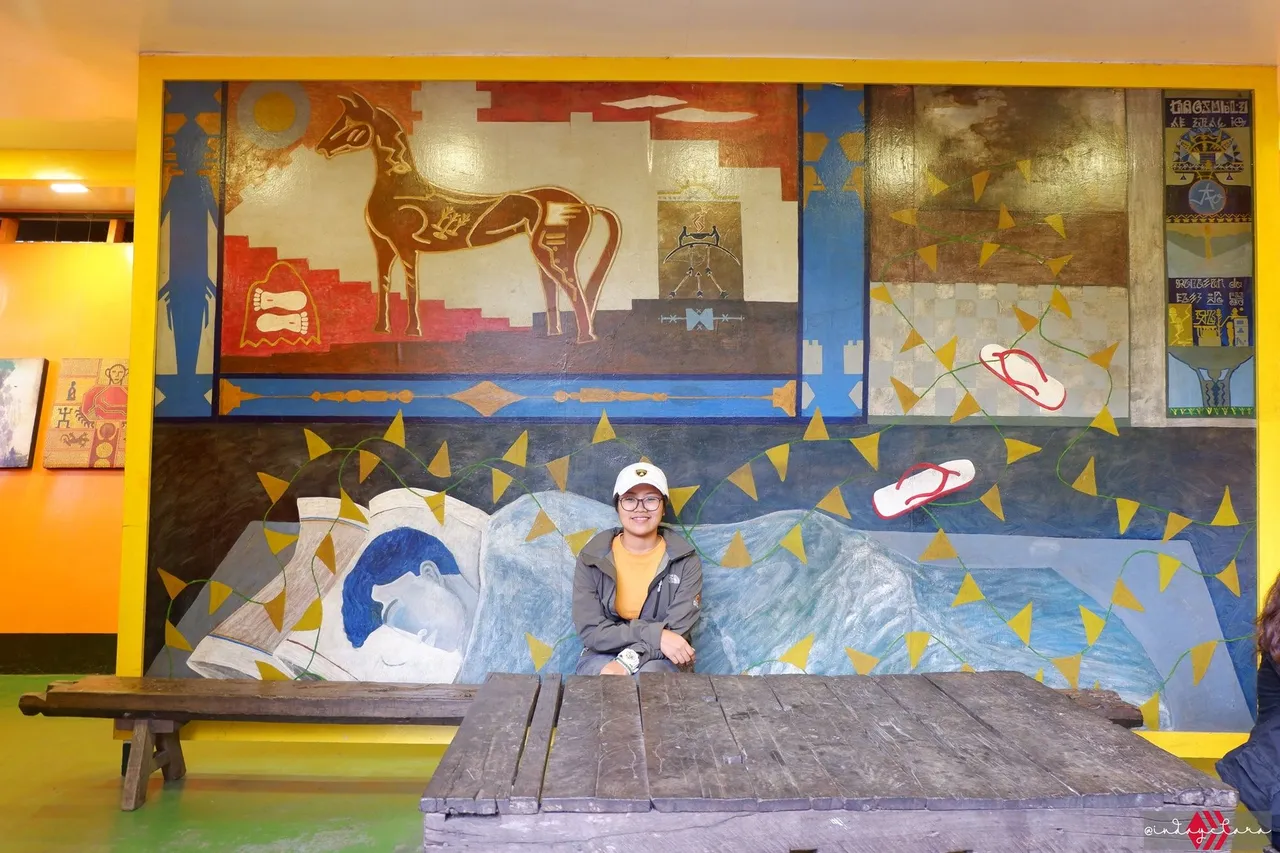
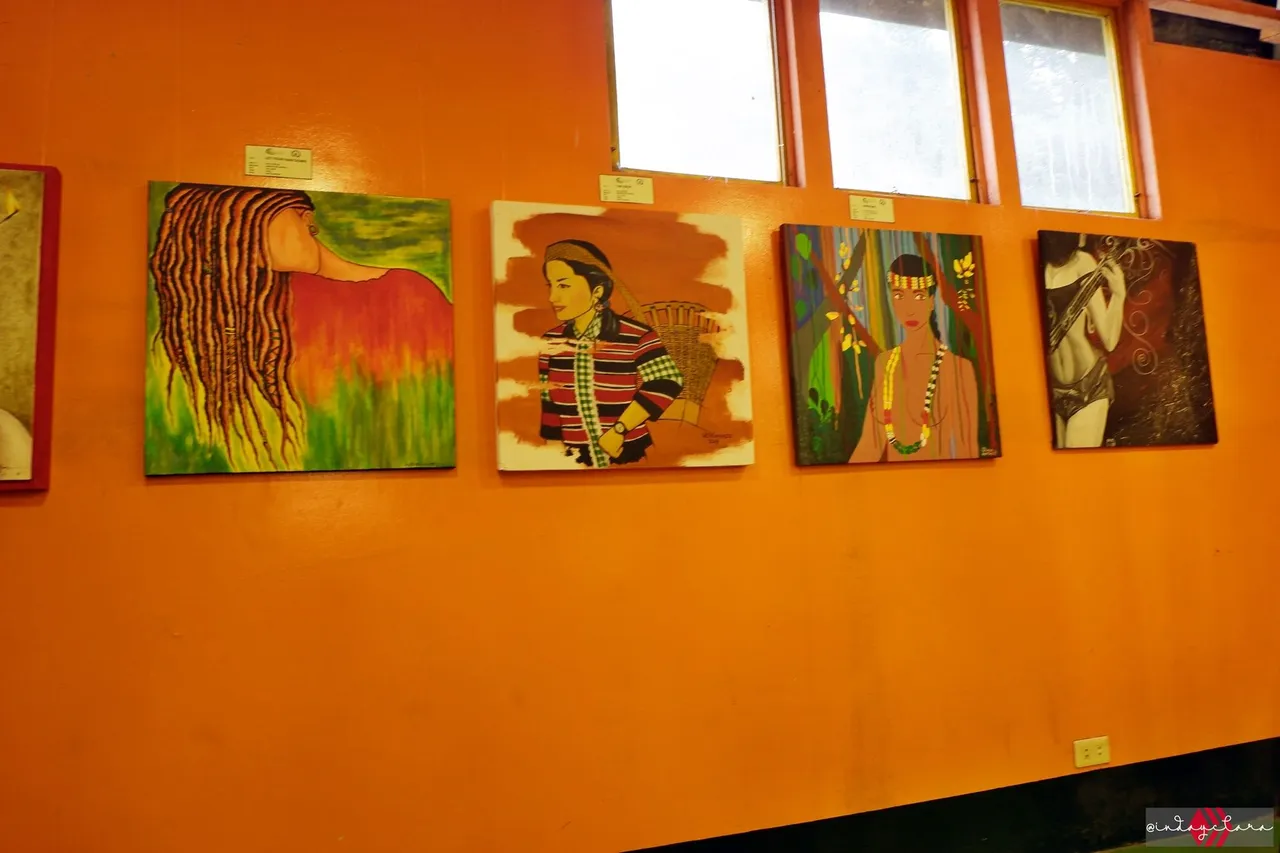
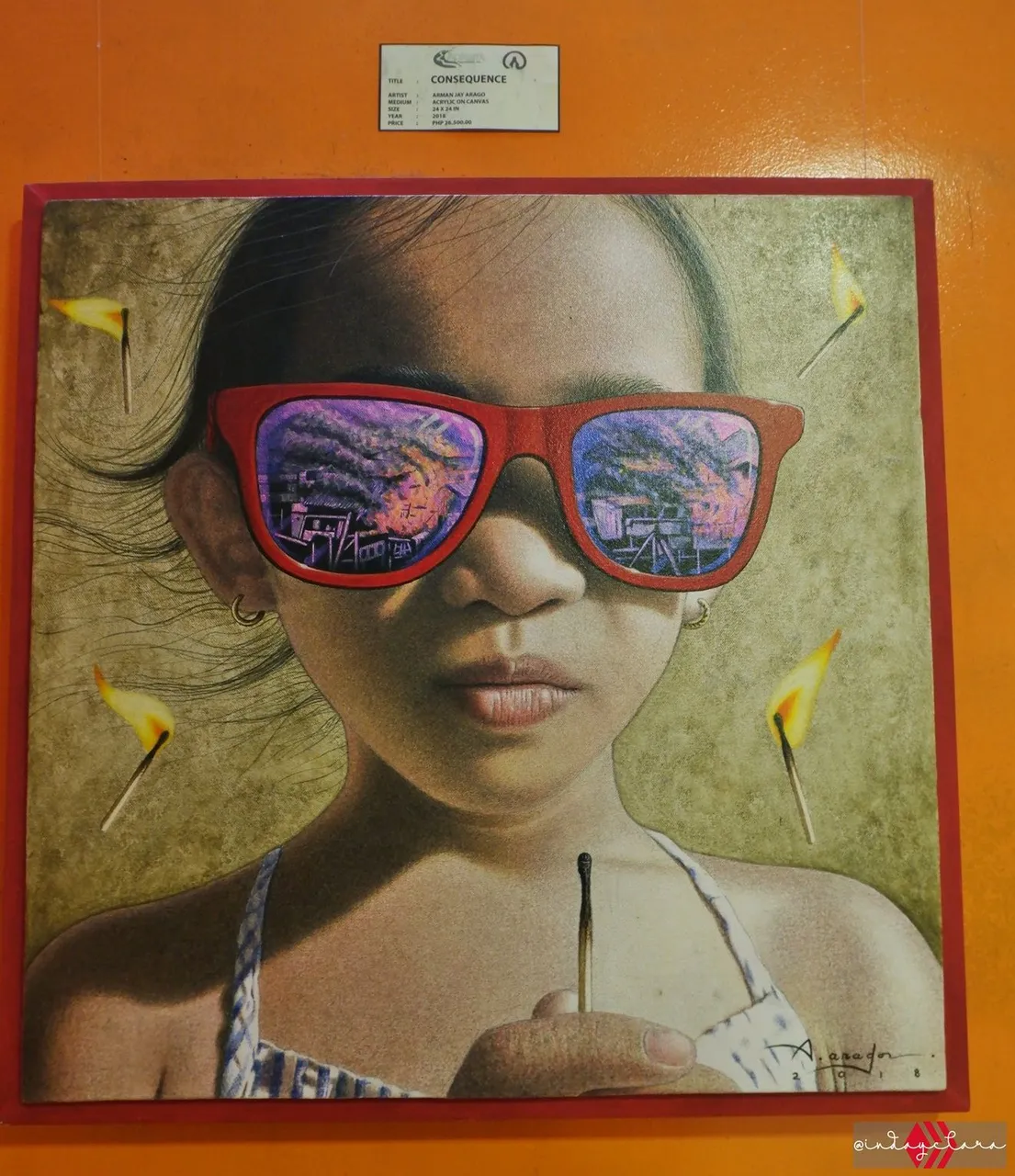
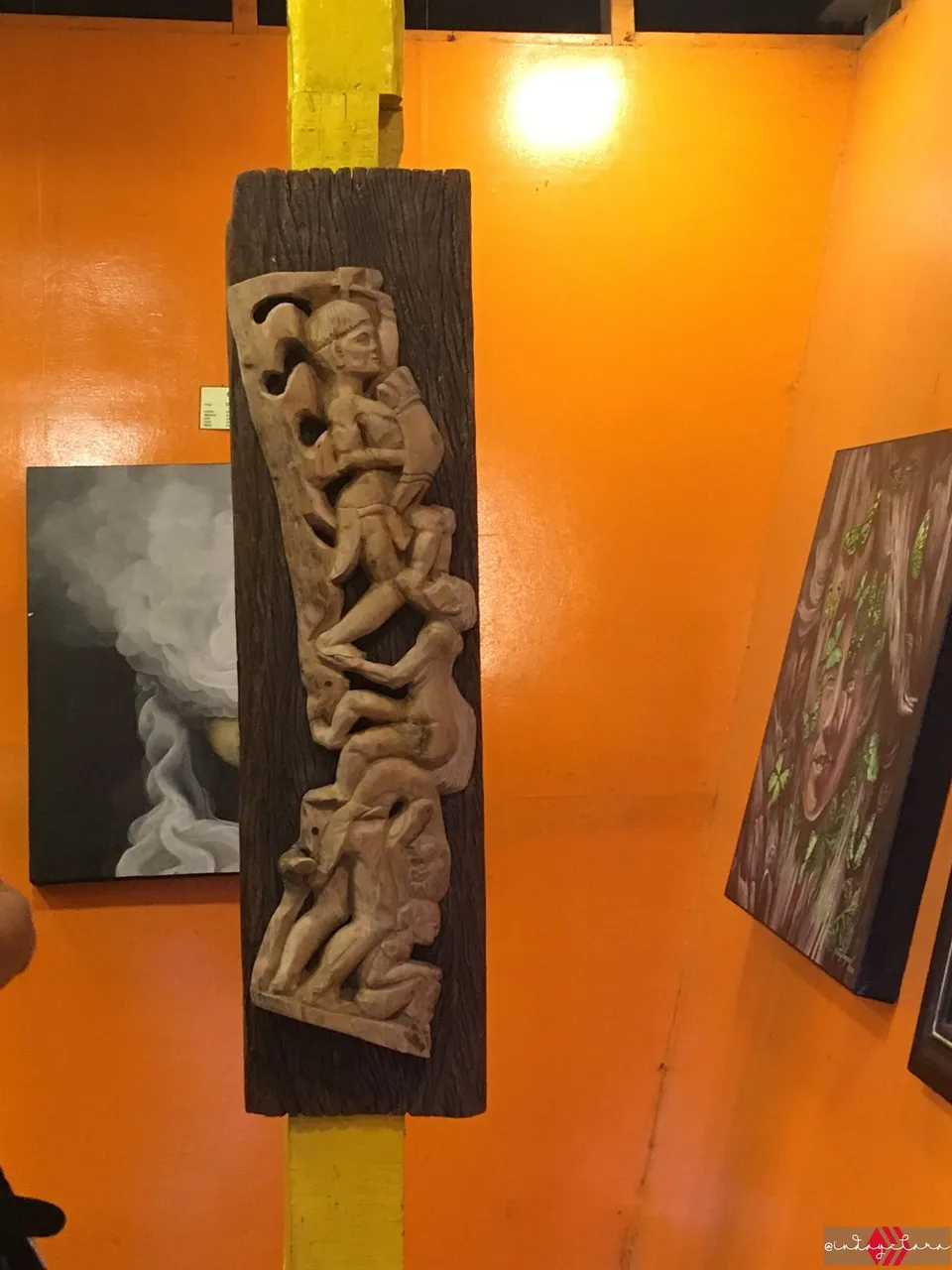
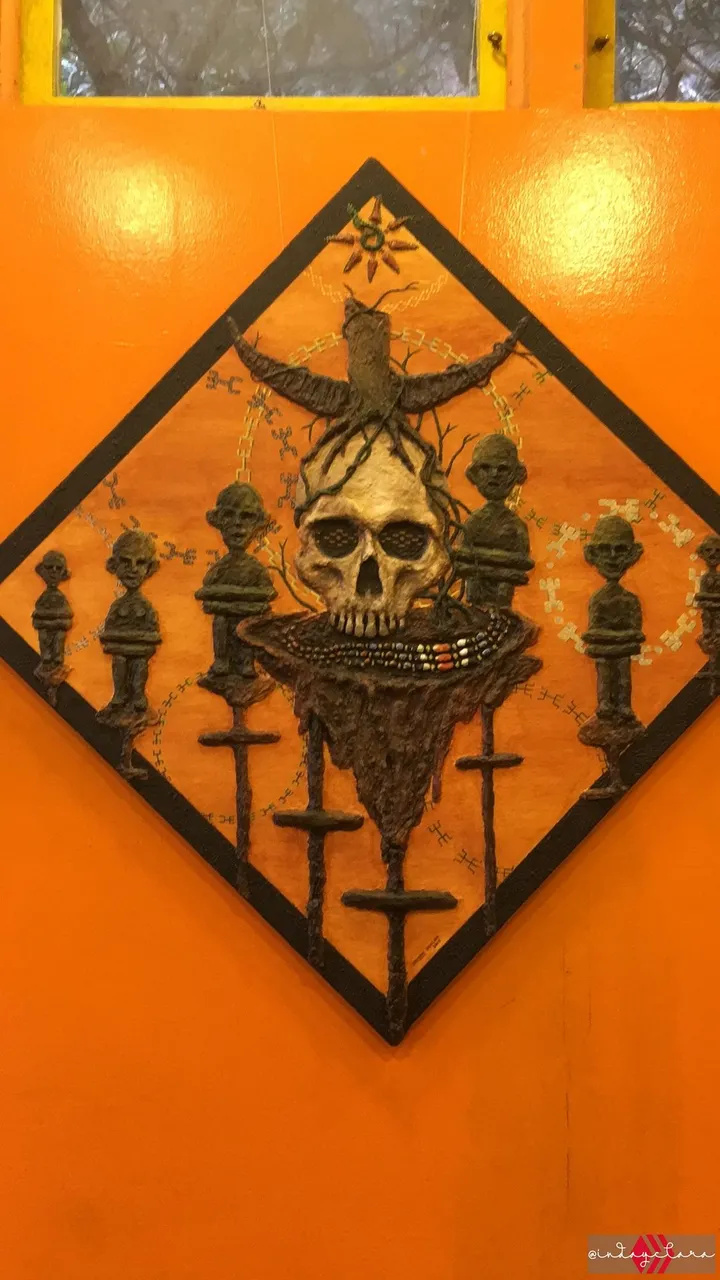
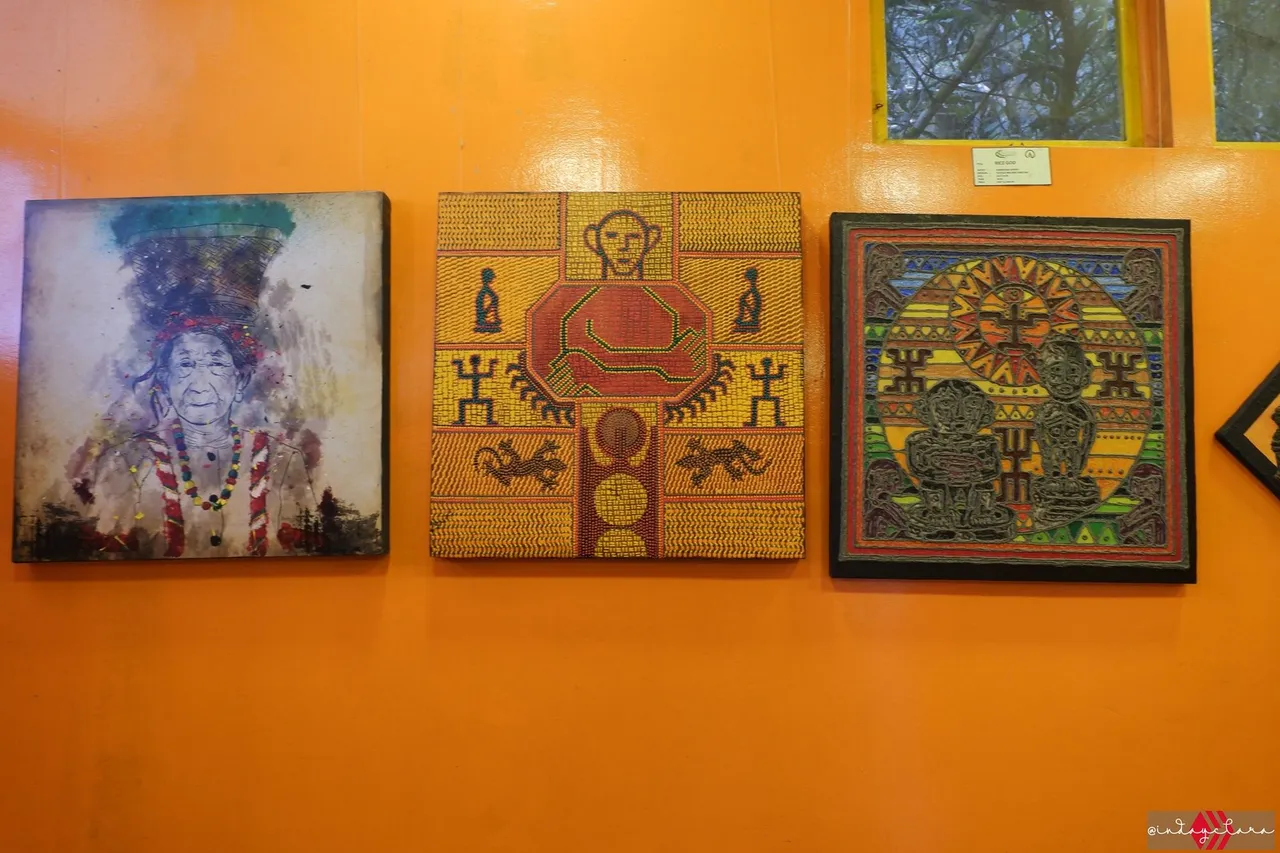
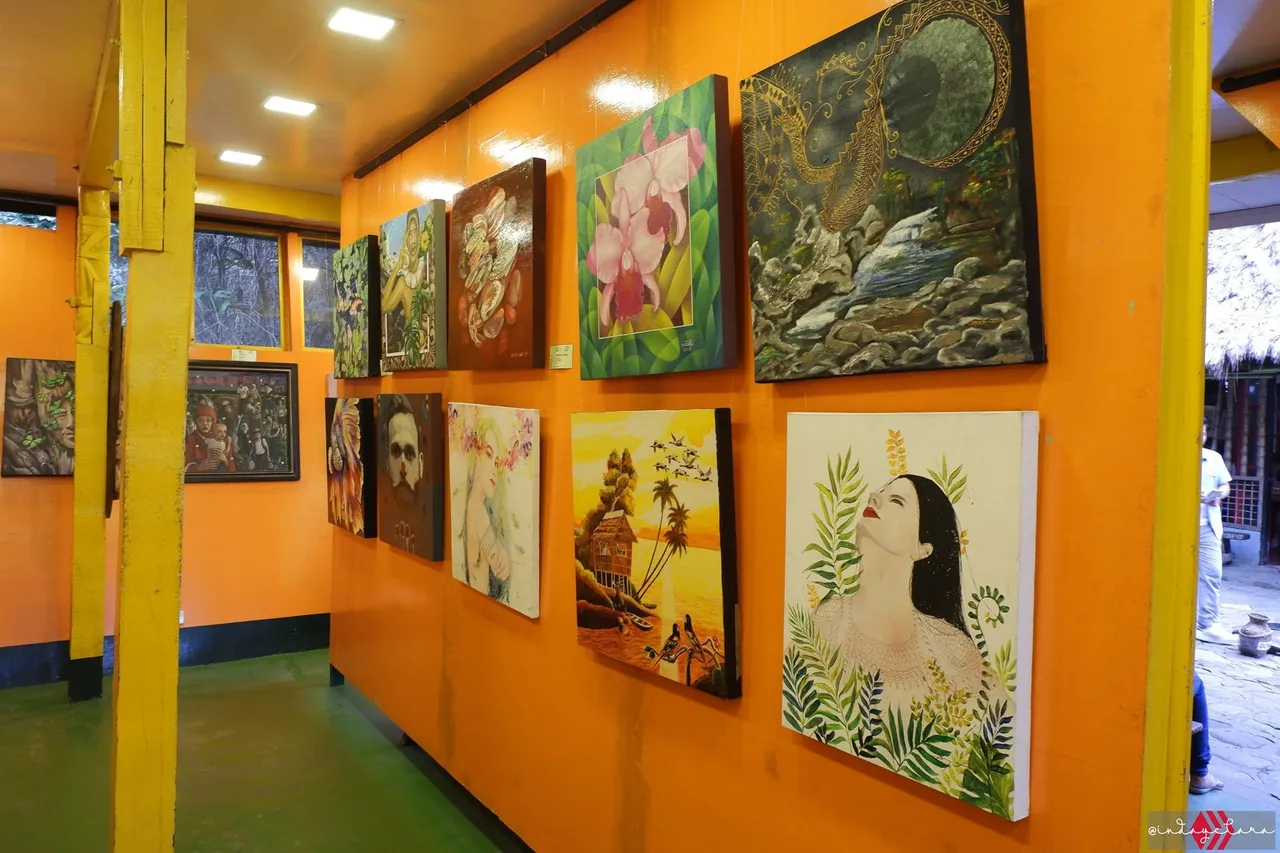
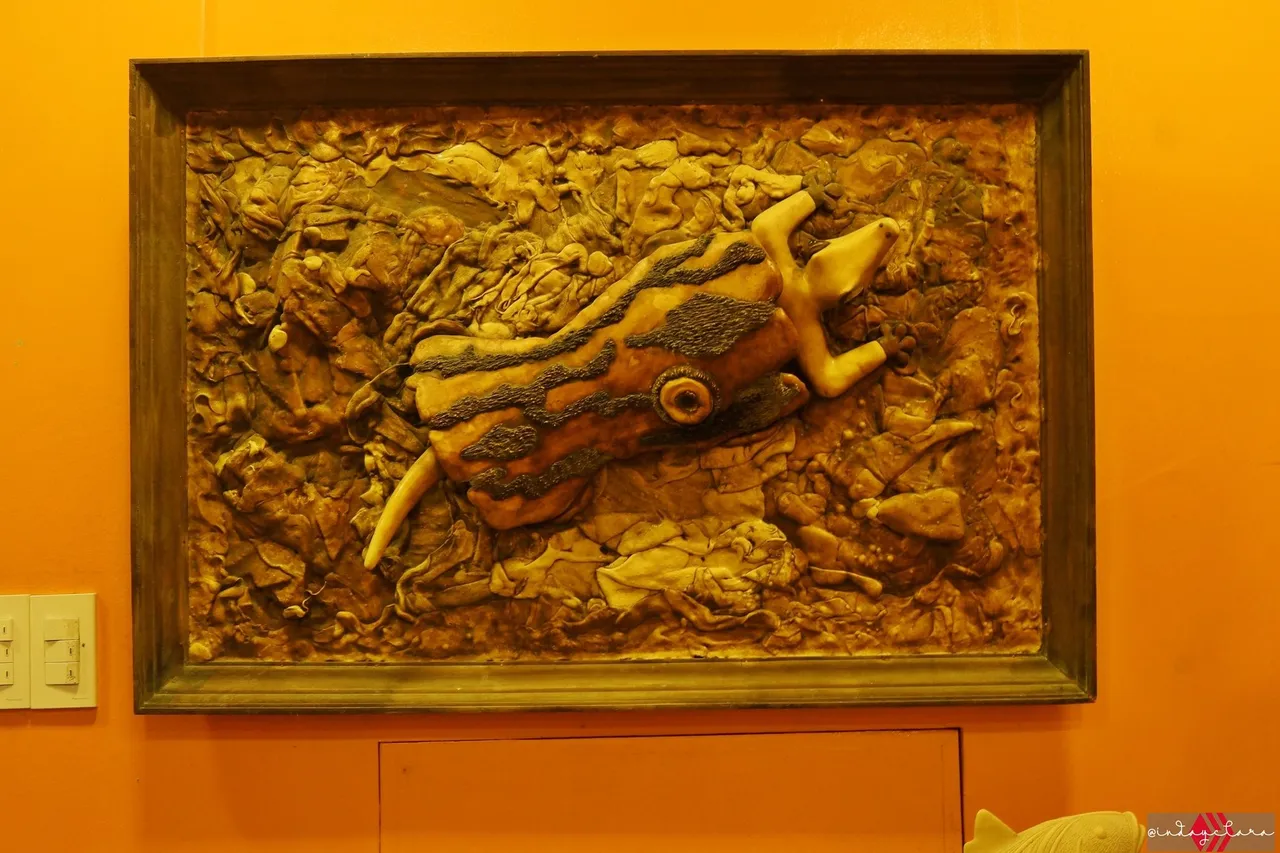
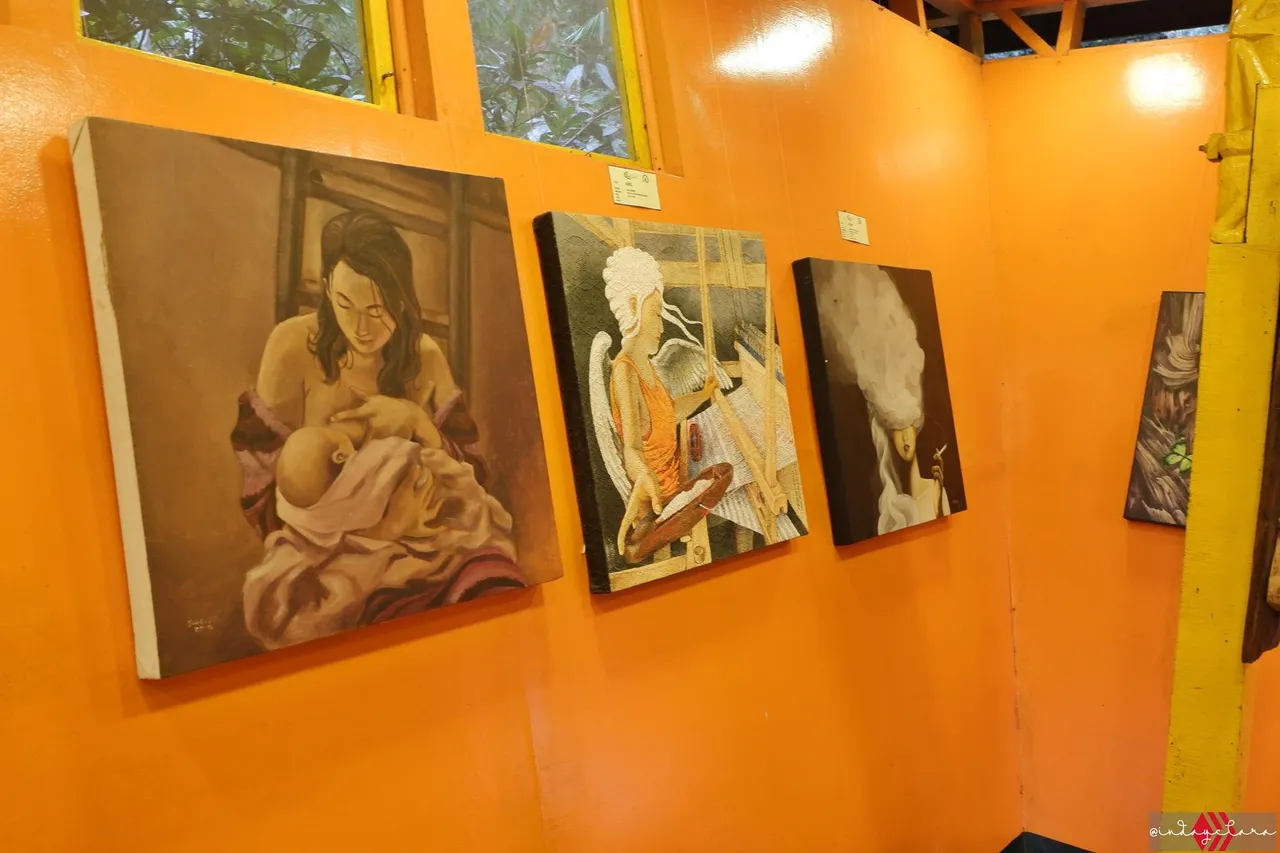
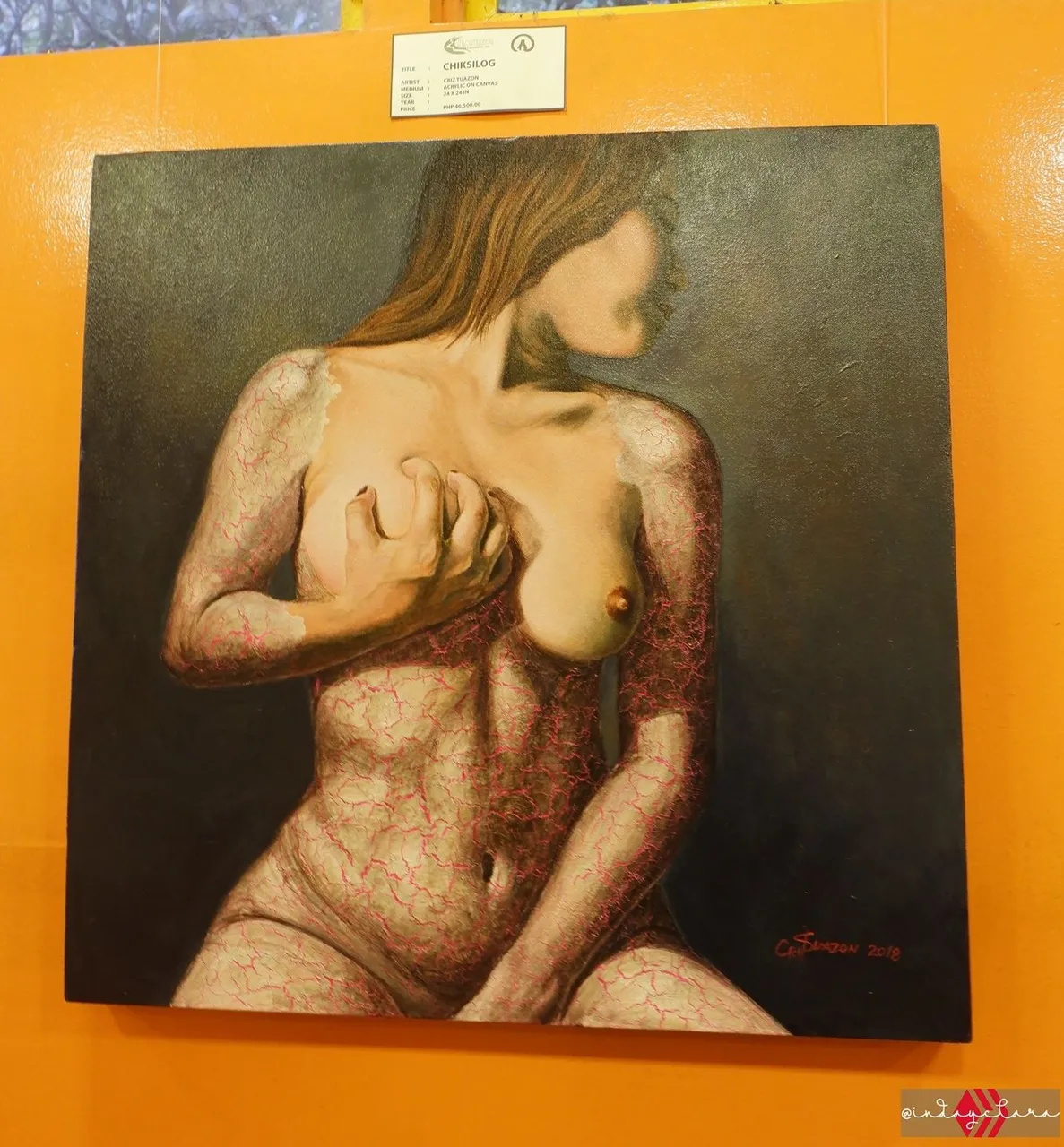
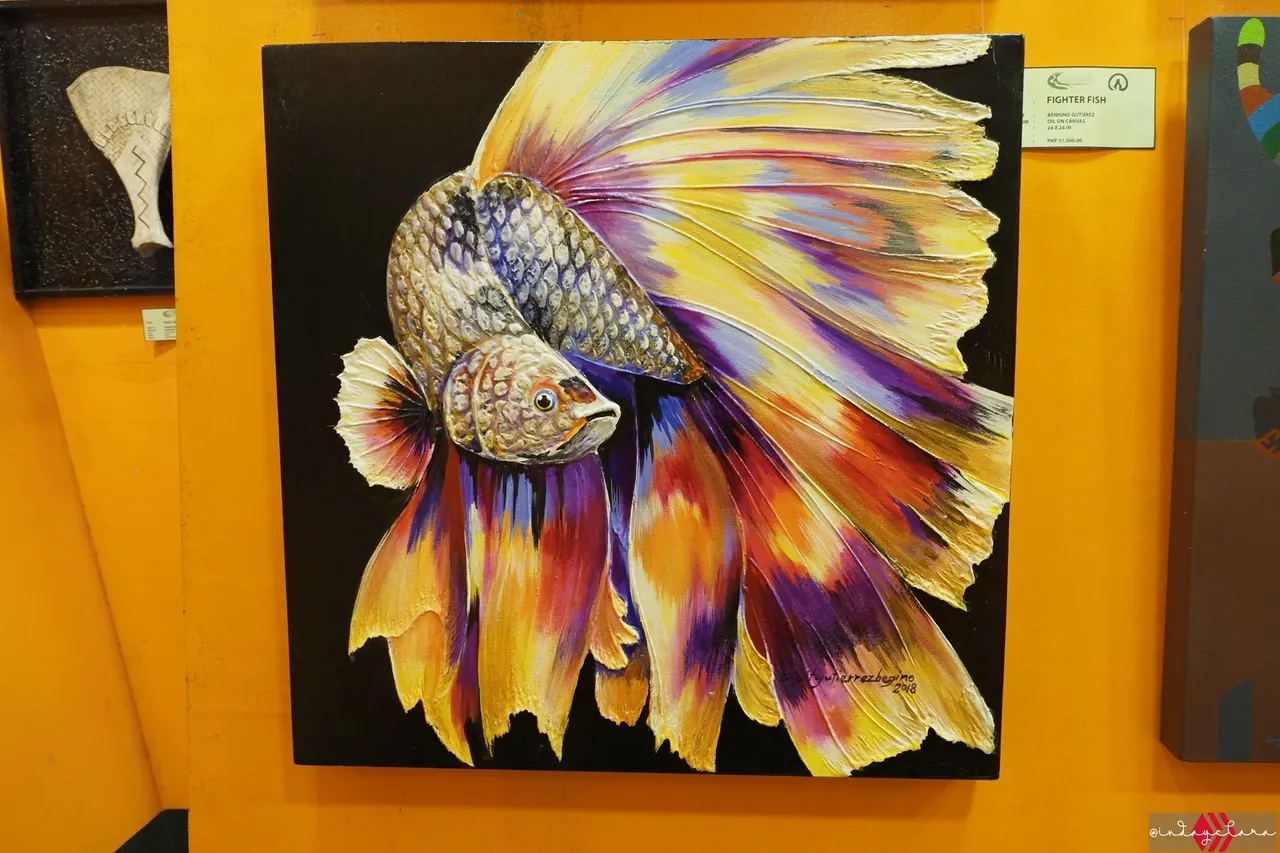
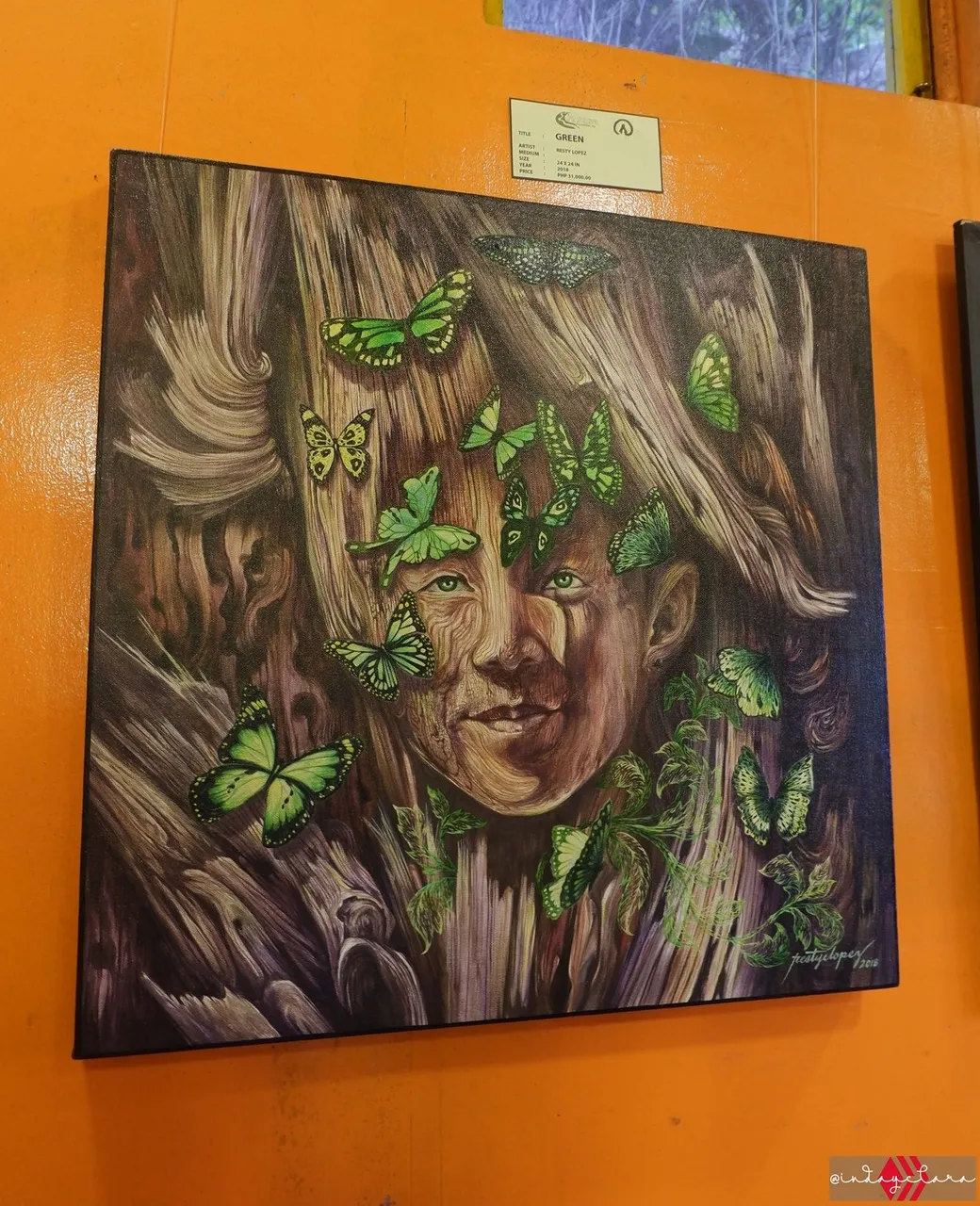
The gallery showcased what local Filipino artists are capable of. Their artworks are one way to be connected with the Filipino culture and history so make sure to spend time here if you ever get to visit the place.
Right after our short exploration inside the gallery, we came into a jam-packed cultural show. I was confused and thought where did all these visitors come from as I didn't notice them during the start of our adventure. Anyway, we were all excited to see the Igorot traditional dance and I and my partner chose a spot where we can see the Tam-awan's in-house dancers in full view. The men wore bright red "bahags", feathered headdresses, and were the ones to make the beat using the Gangsa. The women were in black tops and bright red, traditional skirts. On barefoot, they showed a lively and fun dance.
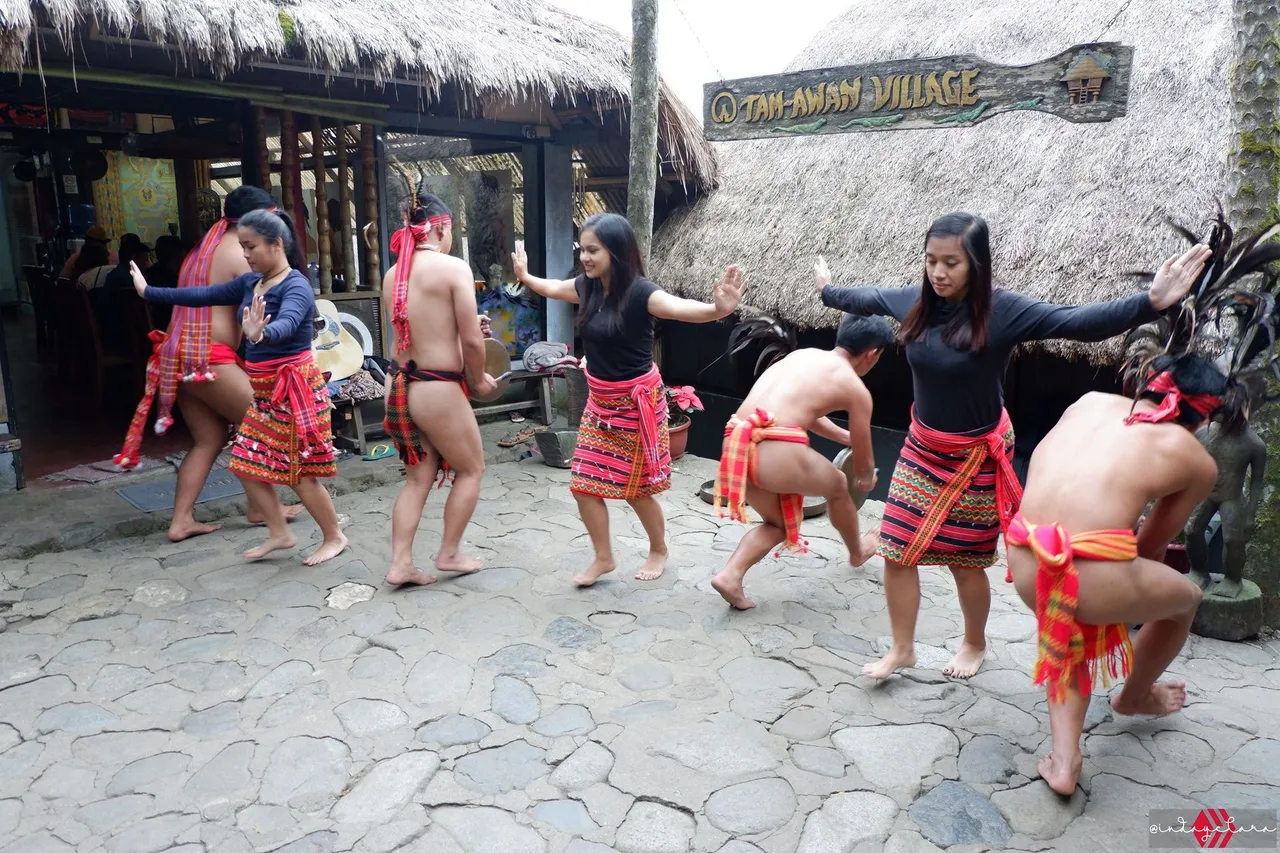
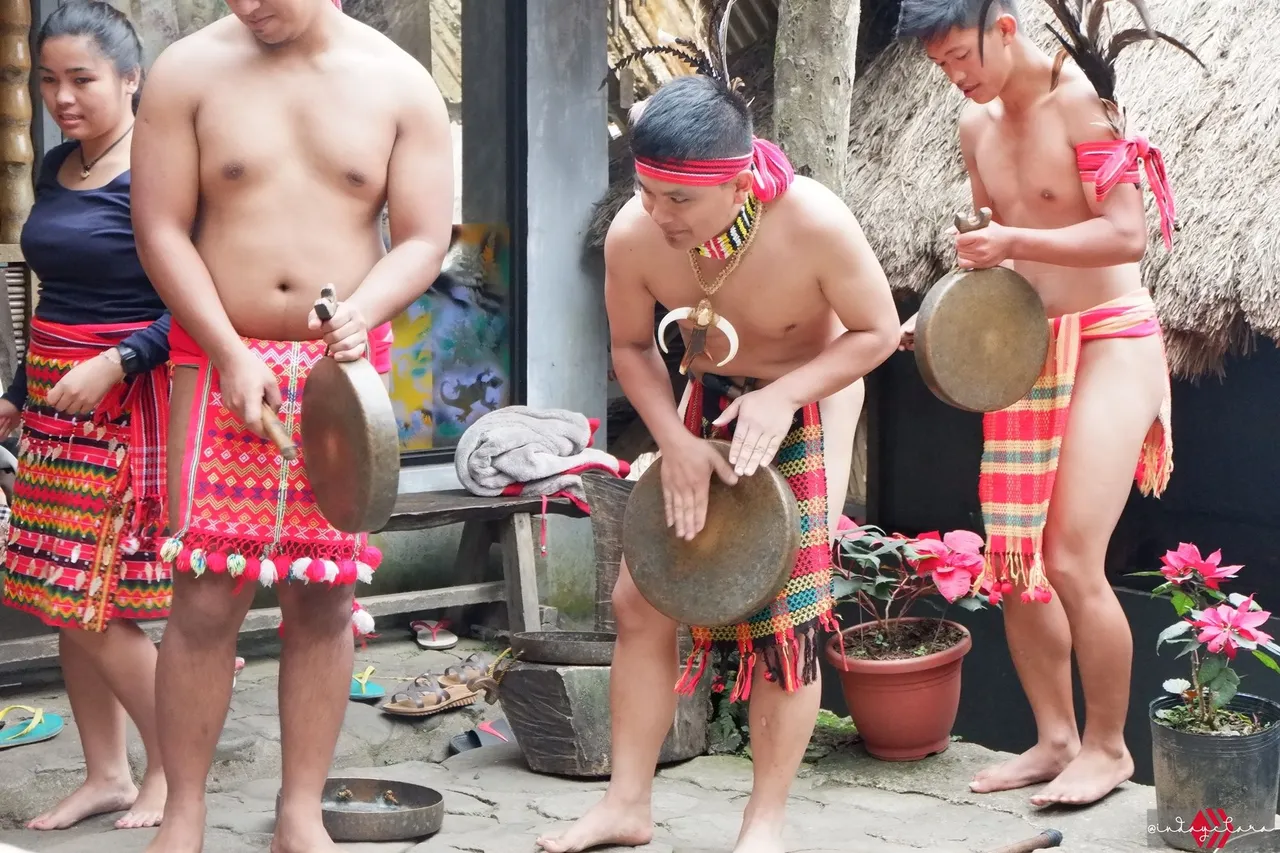
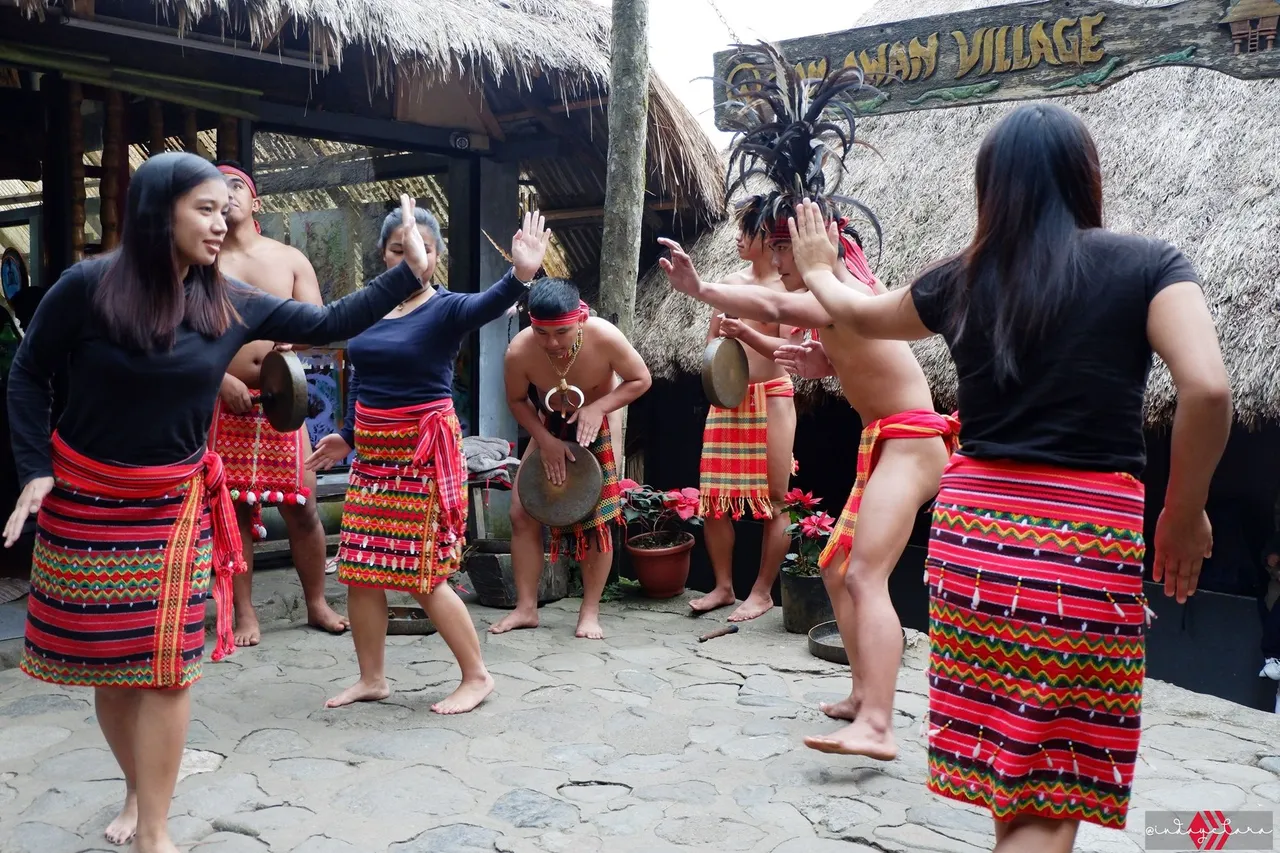
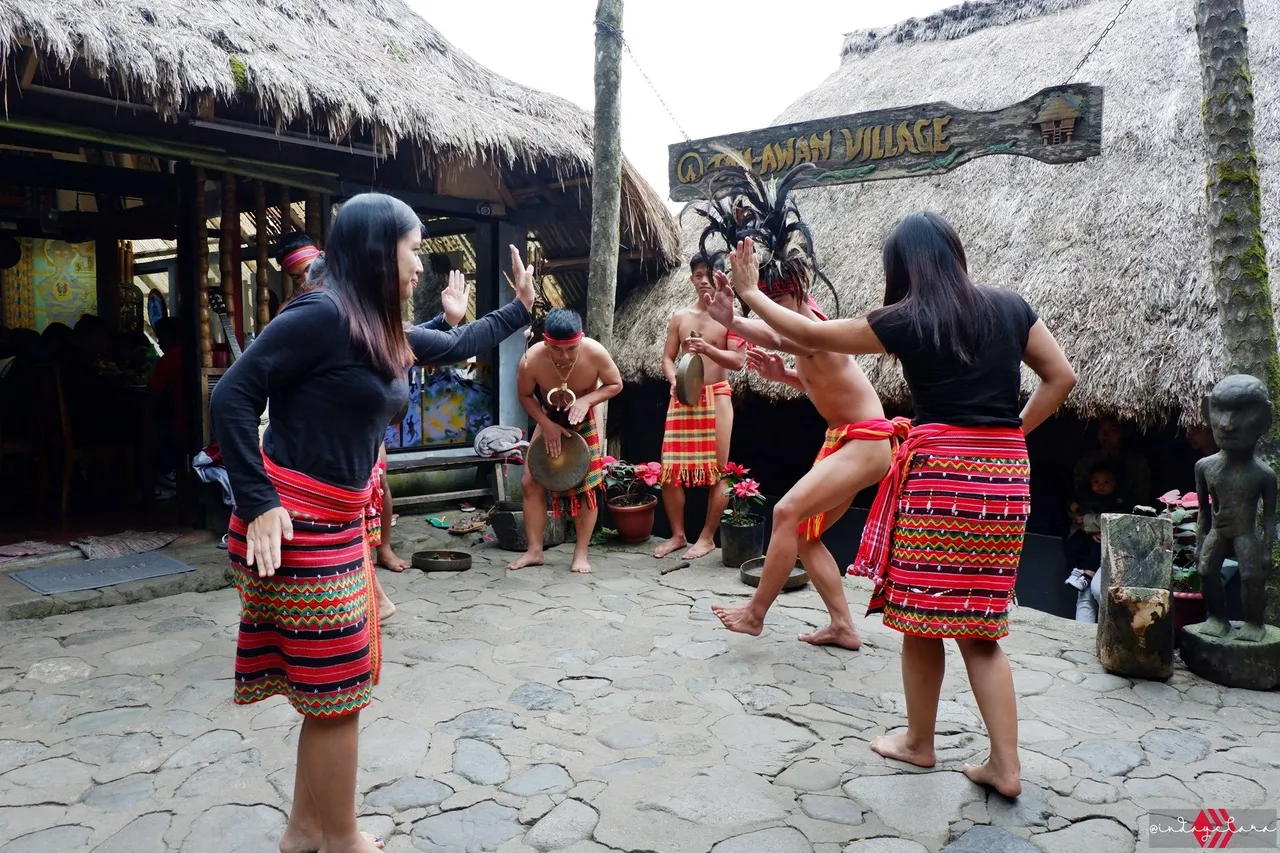
The Cordillera Region is the ancestral homeland of the Cordillera indigenous peoples, collectively referred to as the “igorots”, meaning “people of the mountain”. There are seven (7) major ethnolinguistic groups or peoples, namely the Kankanaeys, the Bontocs, the Kalingas, the Ifugaos, the Tingguians, the Apayao or Isneg and Ibaloy. Source
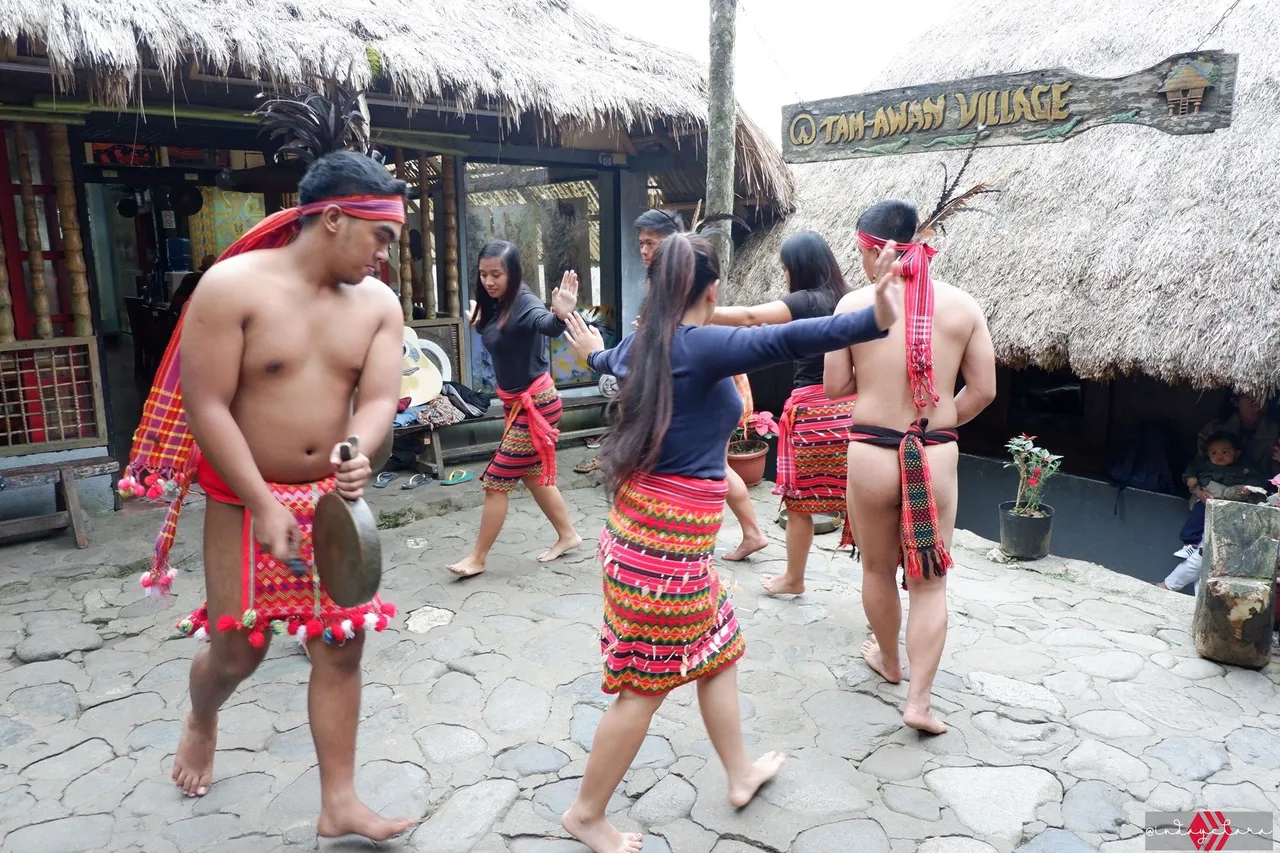
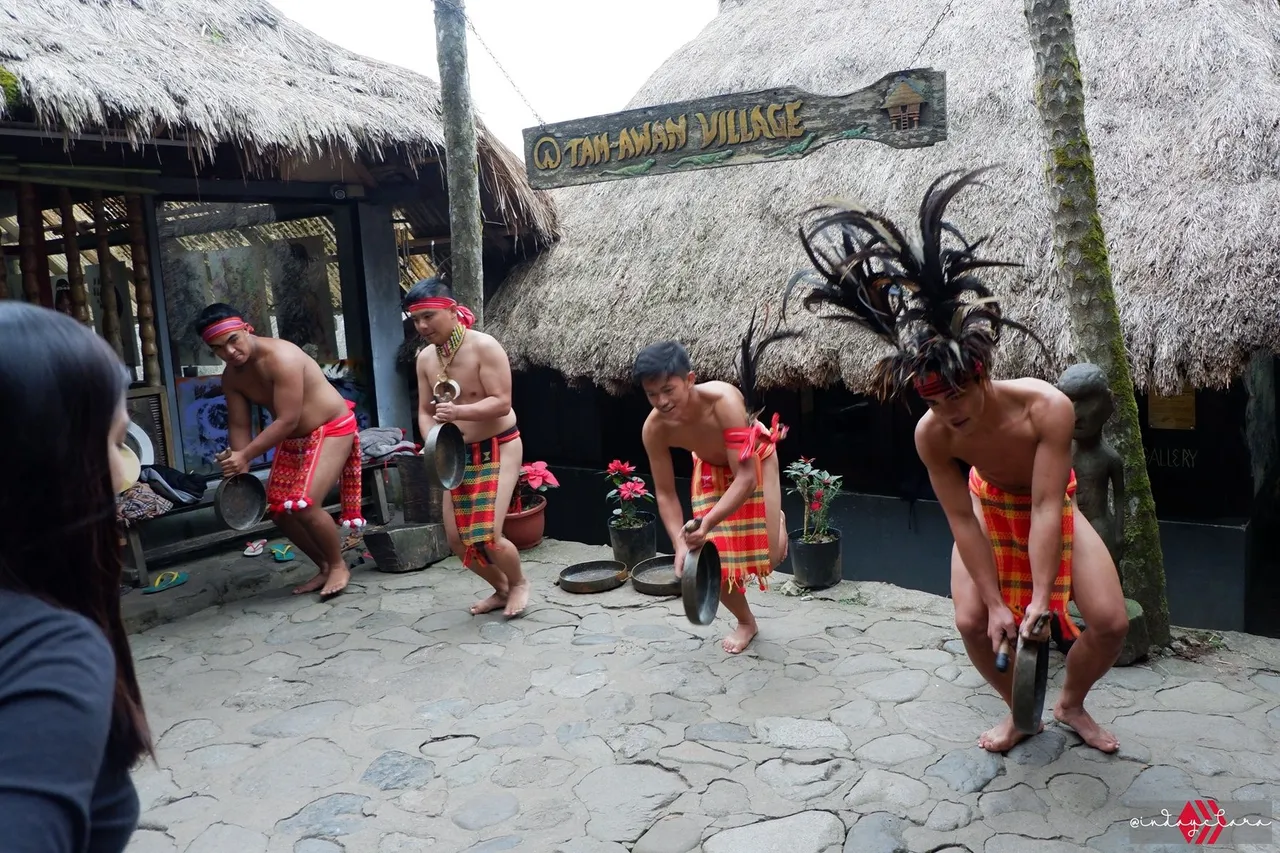
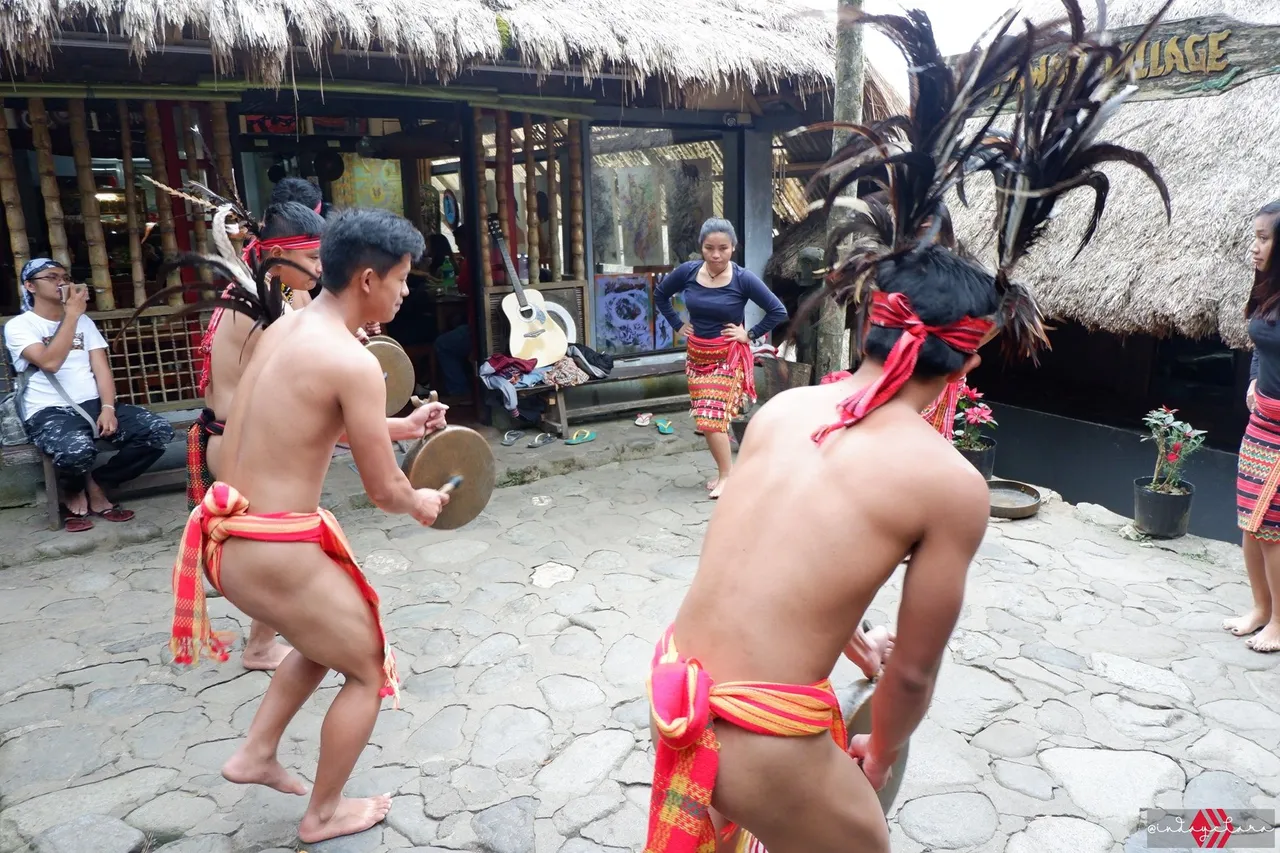
After the show, we continued with our hike around the hillside. The trail was easy and there were parts where it was quite an ascend but railings were installed to assist you with the climb. There are still few traditional structures that can be found all around the village and if one wants to truly experience how our Filipino ancestors lived, one can opt to rent the Agape huts, the Luccong, and the Ifugao huts.
Further on the upper part of the trail, we came across a huge dreamcatcher set on an overlooking spot where the other huts can be seen. There was also a space where animal skulls (not sure if real or man-made) were hung on top of bamboo poles. Several bul-ul figures can be seen around the trail as well. All these things added to that unique glimpse and experience of our cultural heritage.
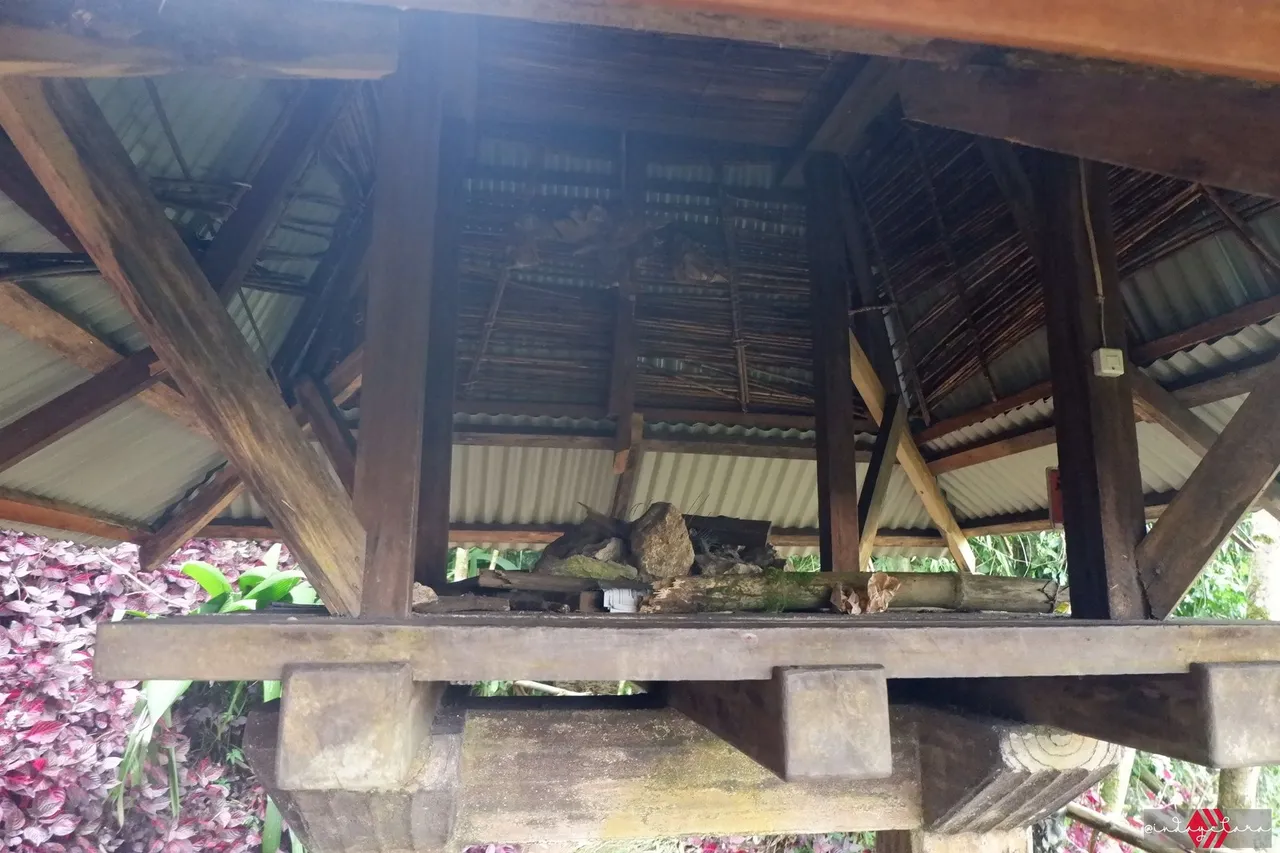

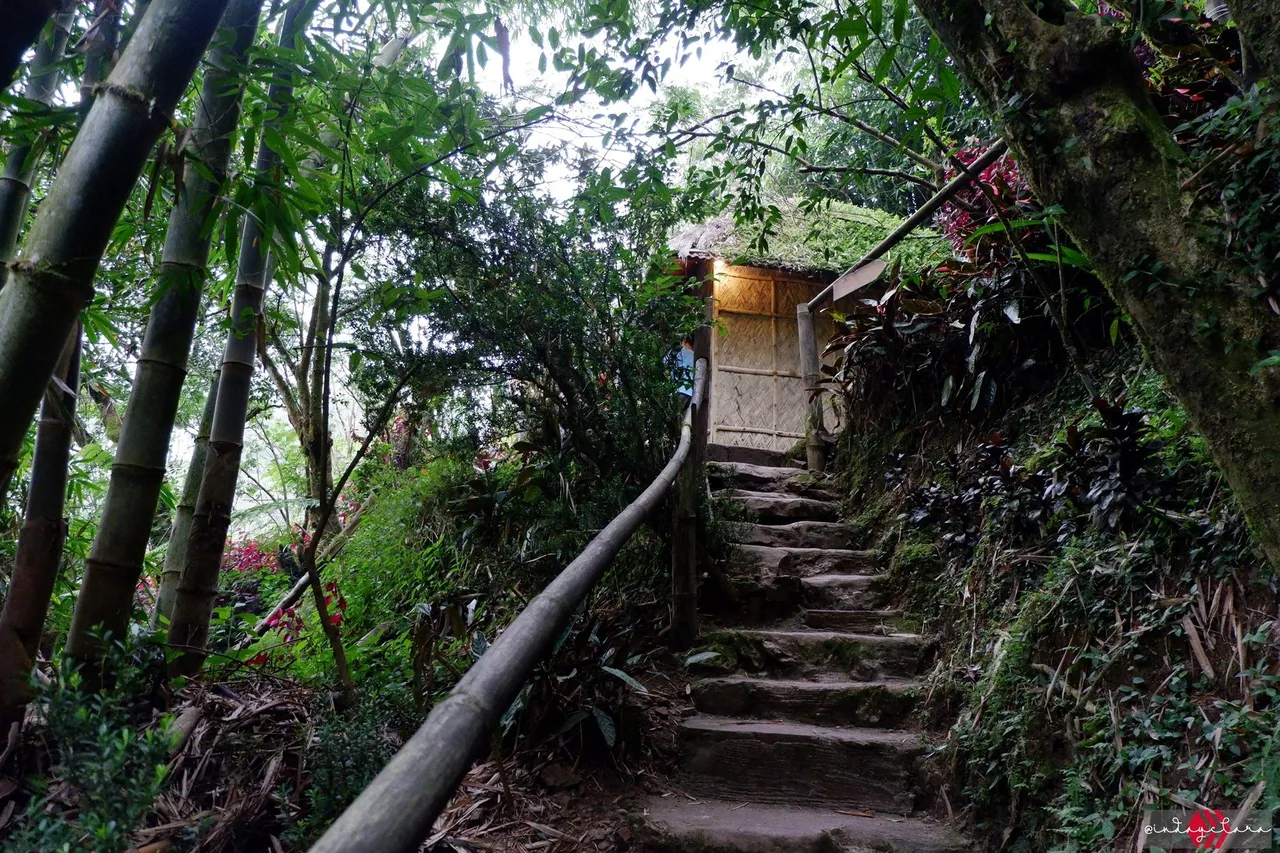
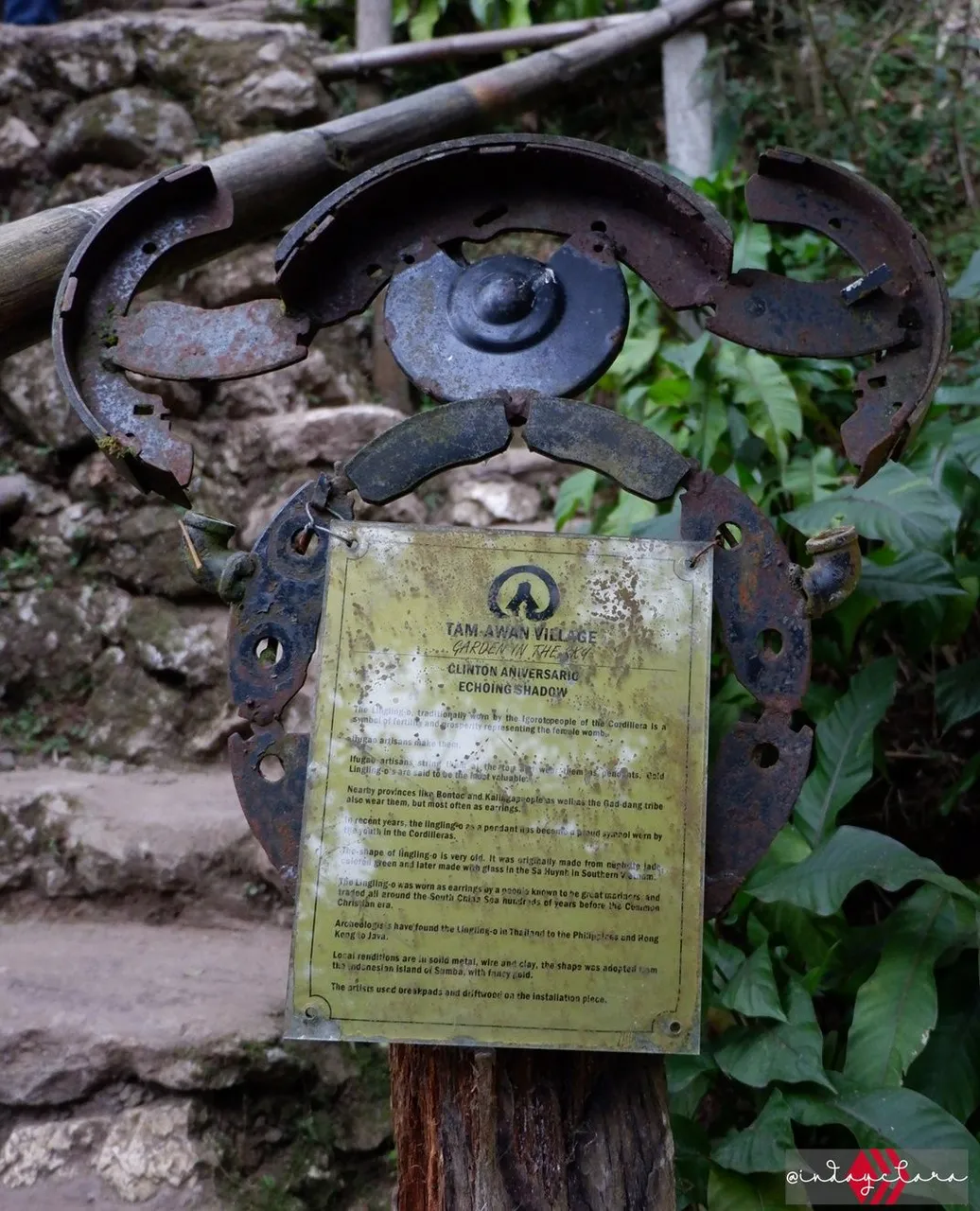
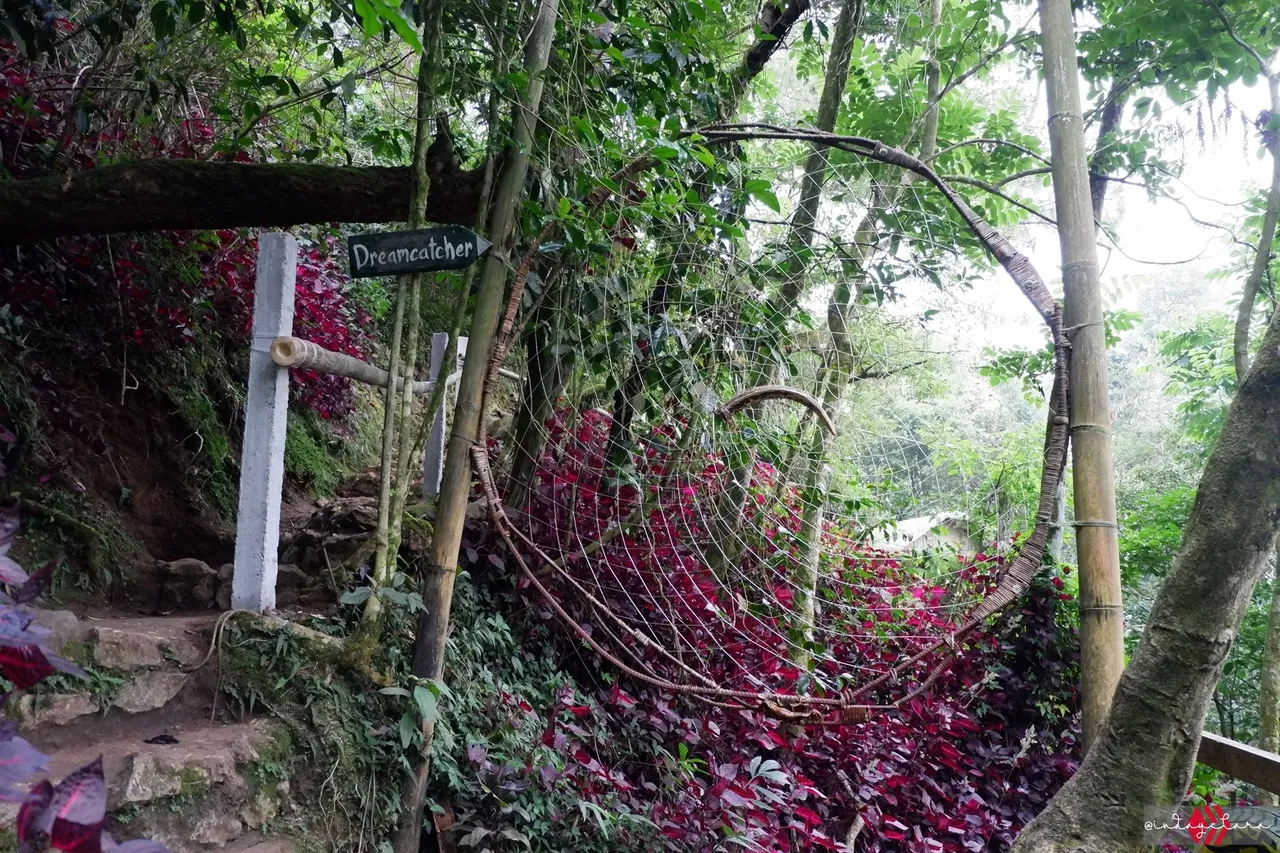
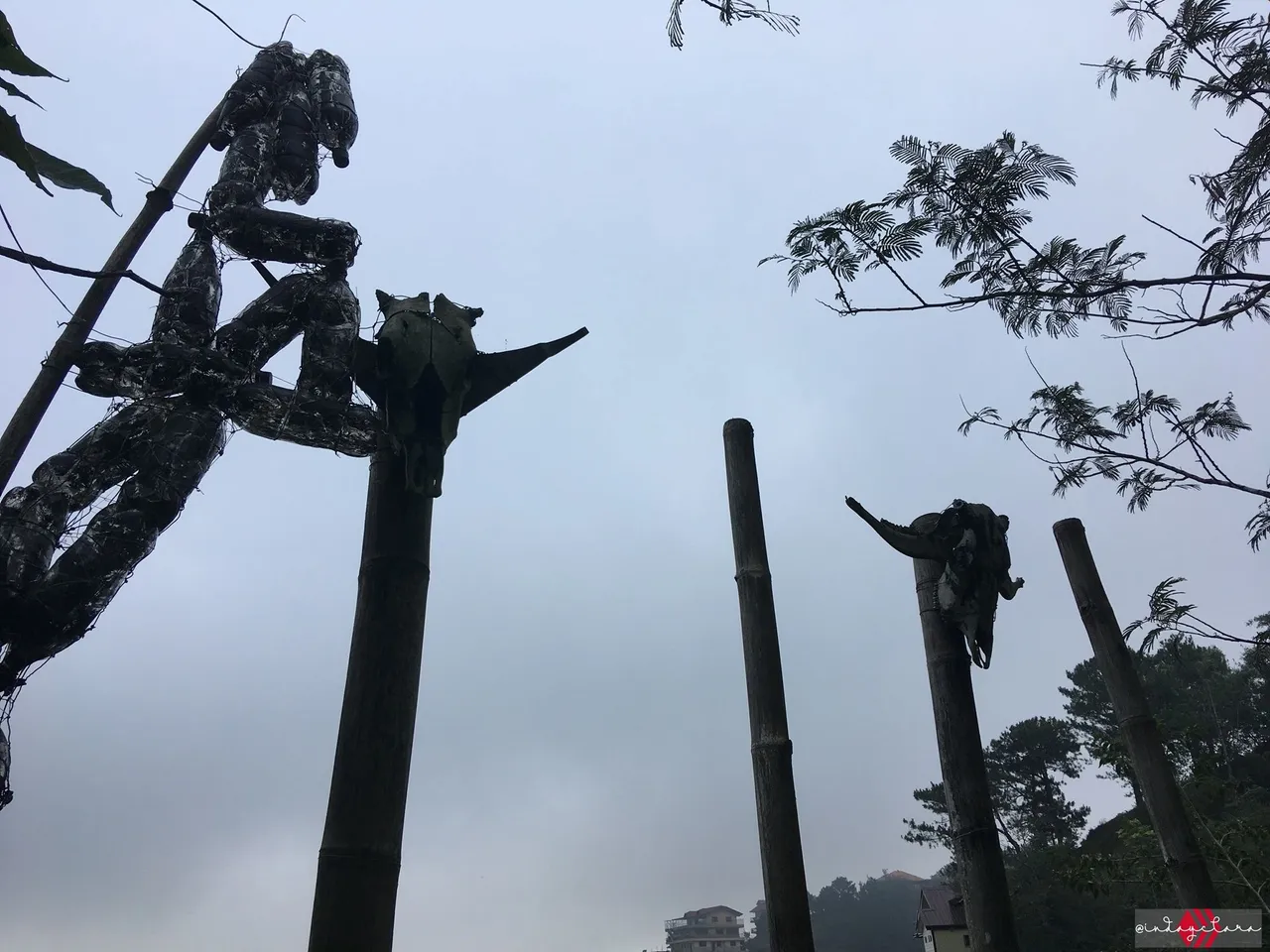
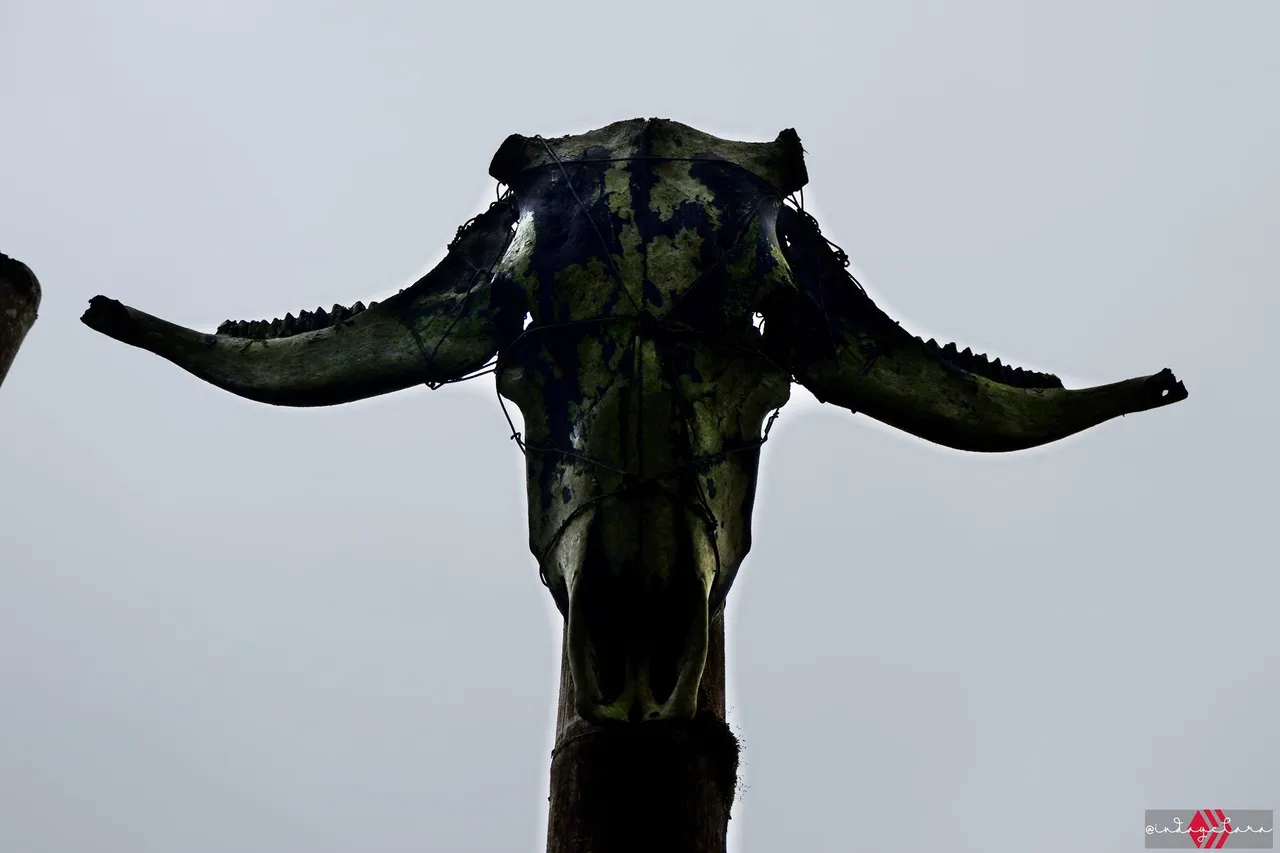
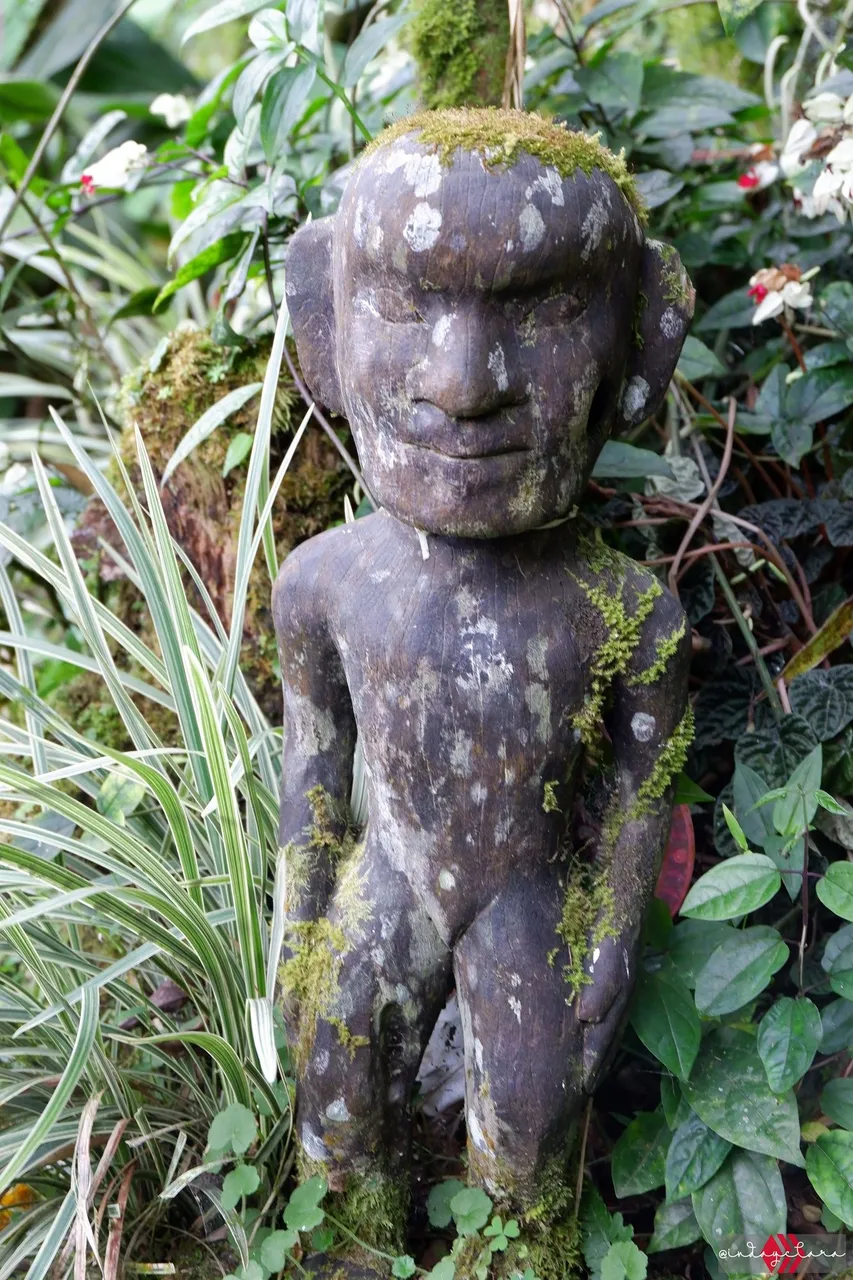

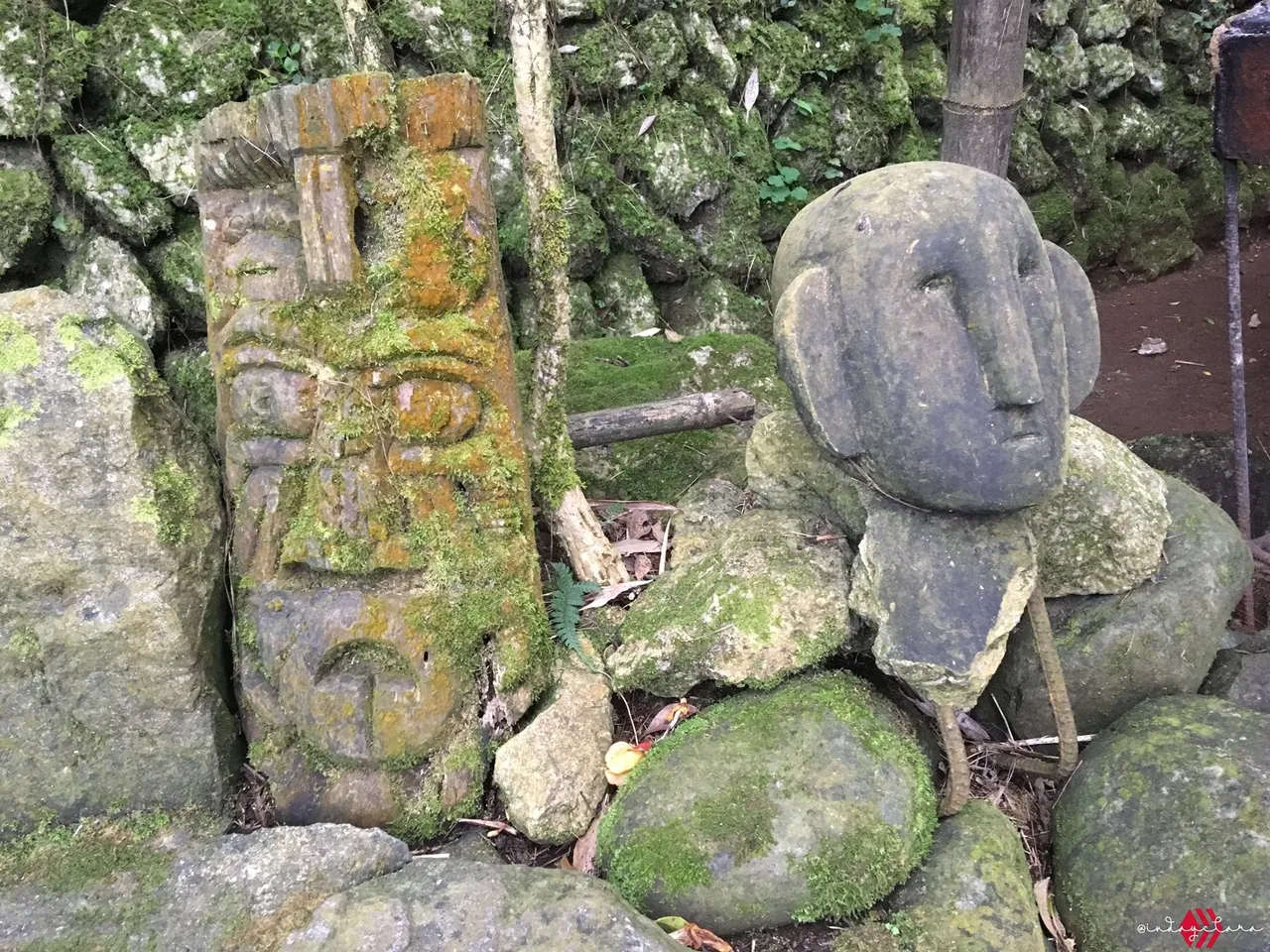
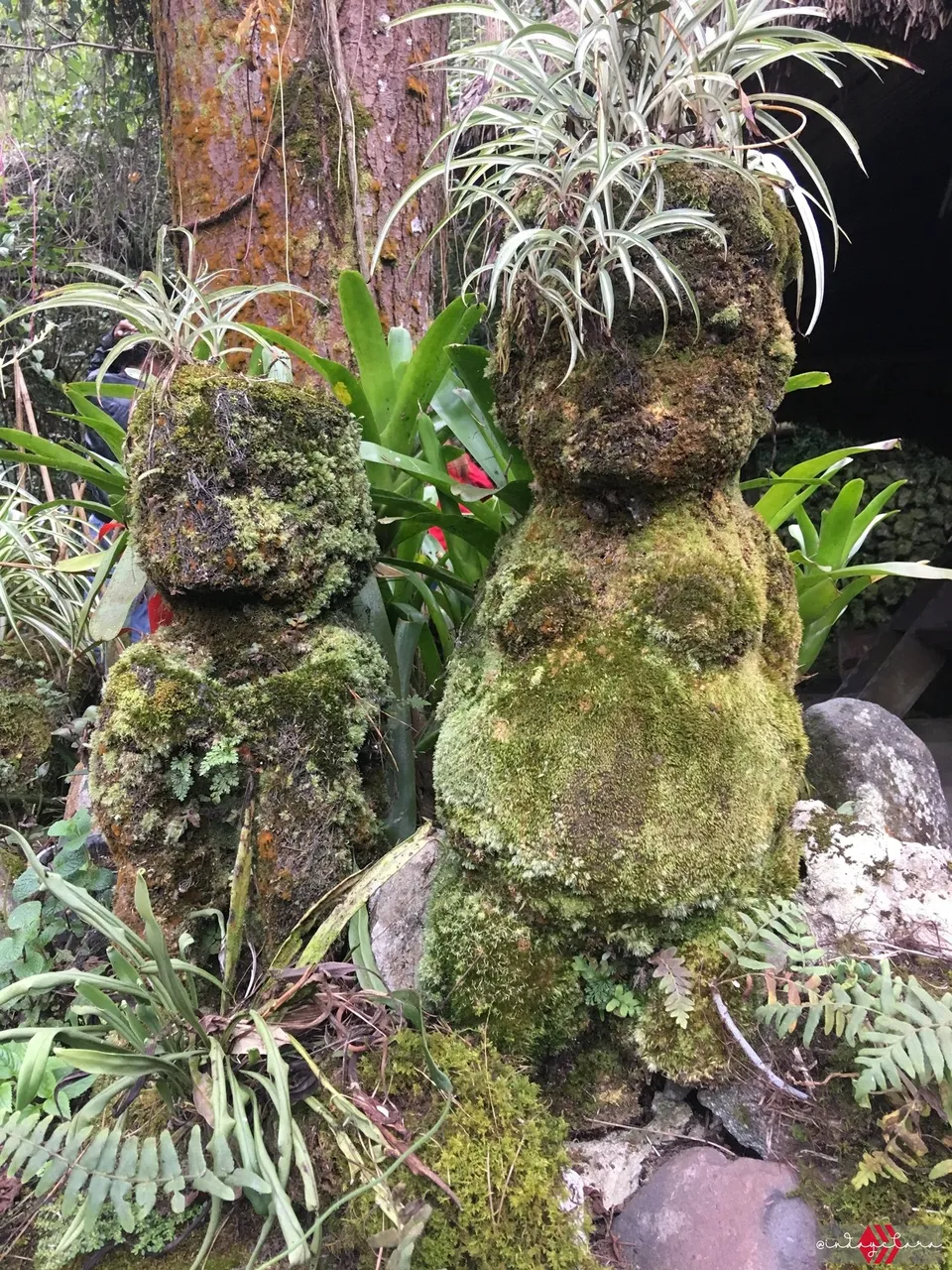
Our last stop was the Bugnay Gallery located near the Cultural show area. We weren't able to notice this one at first because it was a bit out of sight. I was only able to see it when I made a pitstop at the restroom and was so glad I did. The Bugnay Gallery is a native hut filled with more paintings by local artists depicting Kalinga or Ifugao people and culture. In the middle are wooden figures and dreamcatchers. The dark interior made it a bit of a mysterious and unique space.
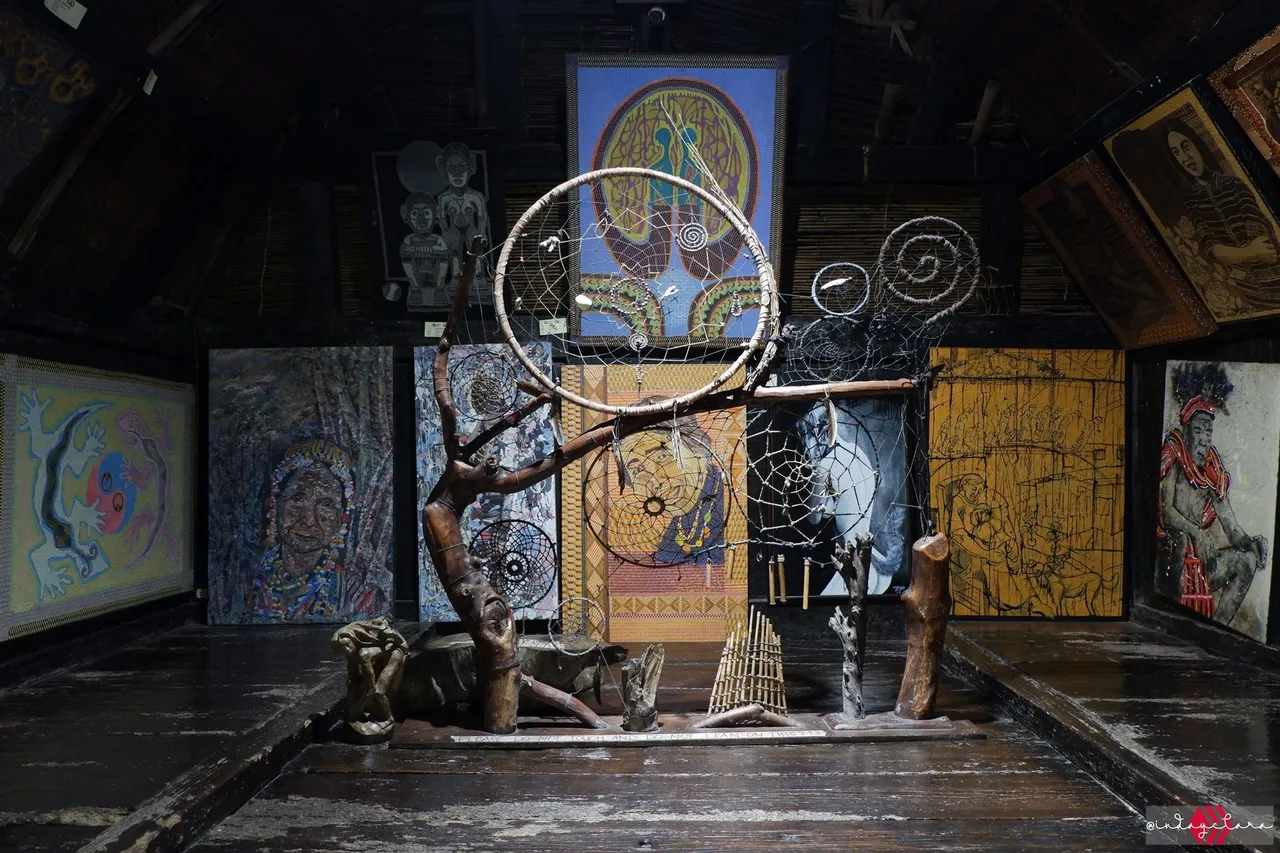
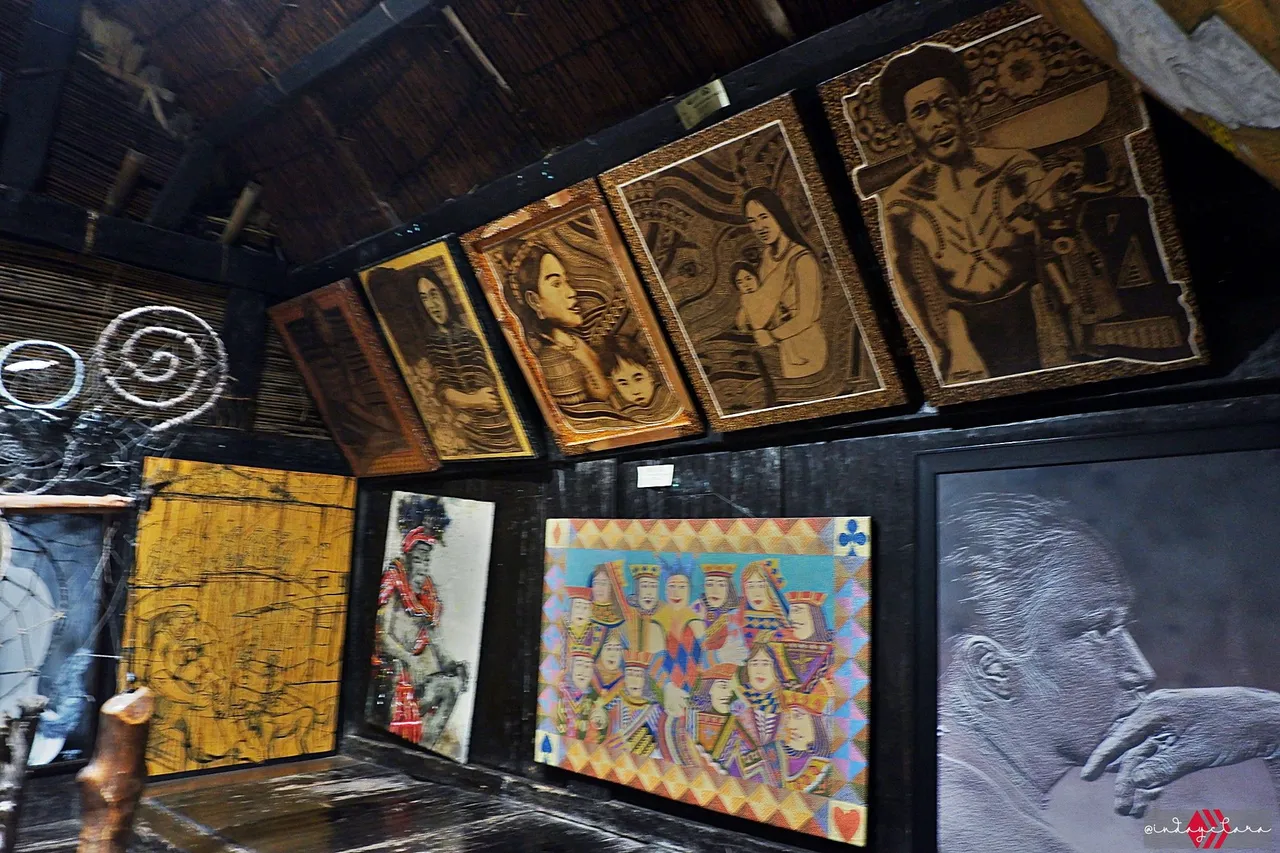
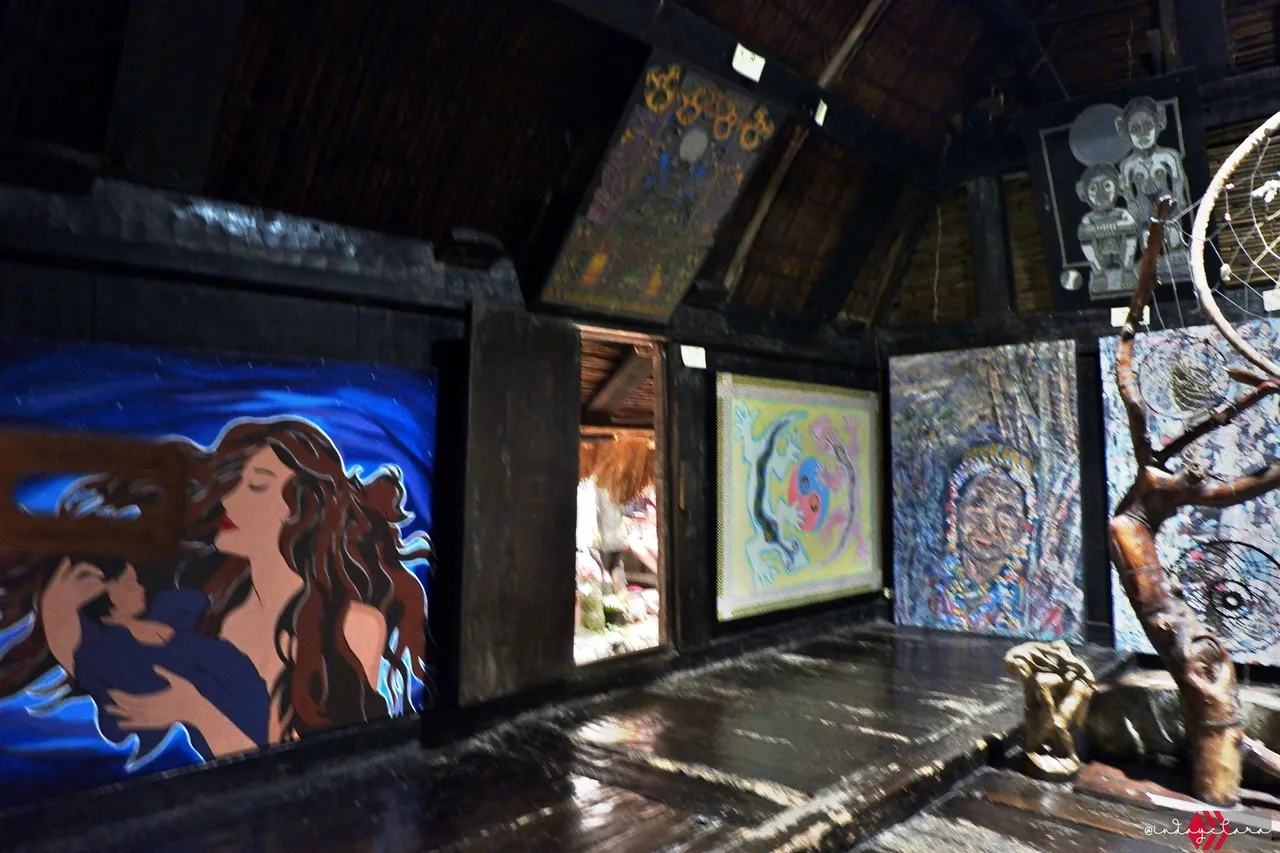
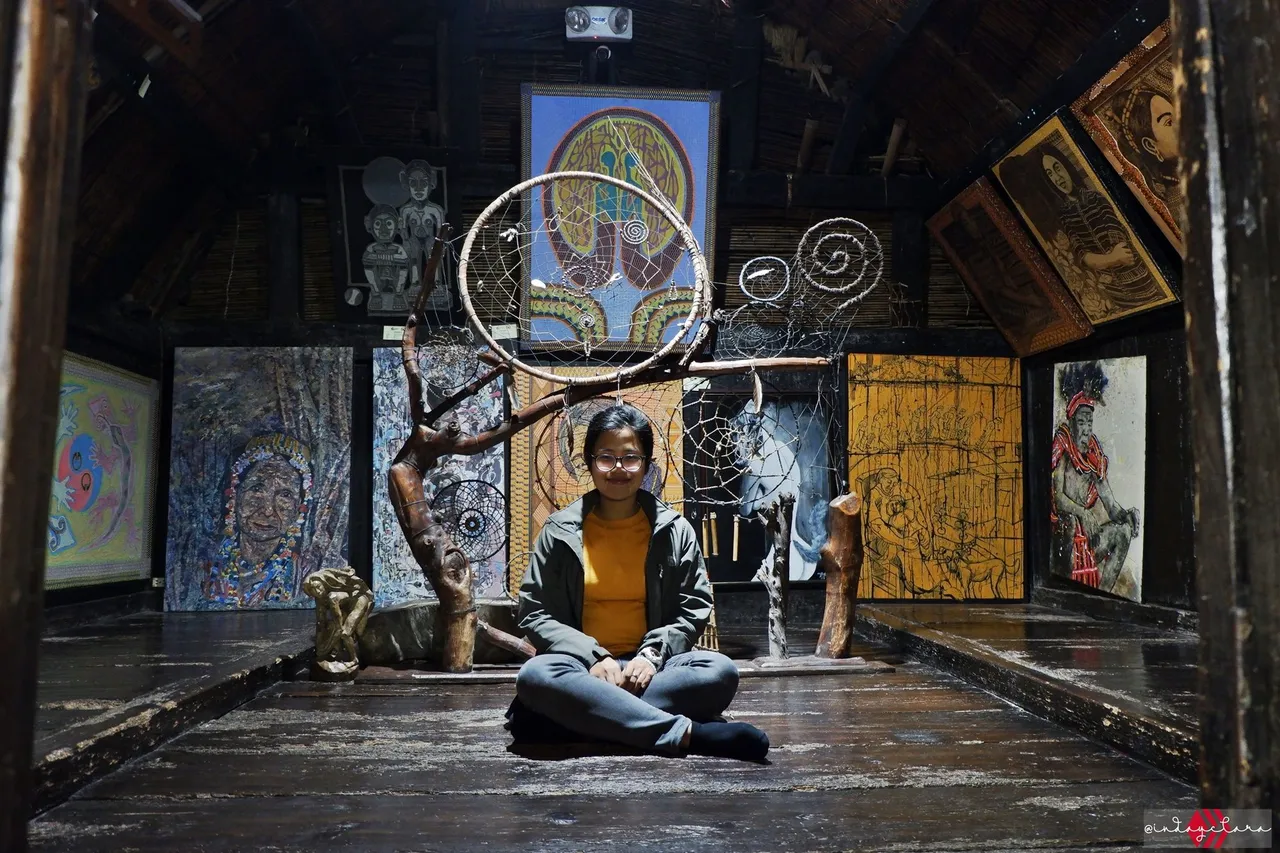
Tam-awan Village was established by Chanum Foundation and continues to open their doors for everyone to visit. Art Exhibits are ongoing onsite and virtually. They are open from Mondays to Saturdays 8:00 am - 6:00 pm.
Tam-awan Village is worth visiting! A place that offers an amazing experience of our ancestor's way of life, rich past and our cultural heritage. Make sure to include it on your Baguio trip!
Dive into Clara's world of bliss as she ventures out into the universe and travel to awesome destinations. If her content made you 😁, then drop some ❤️ by upvoting and leaving a comment.
Join her as she take on the road to self-discovery and limitless possibilities.

Also, click the Follow button to keep posted on her whimsical musings.